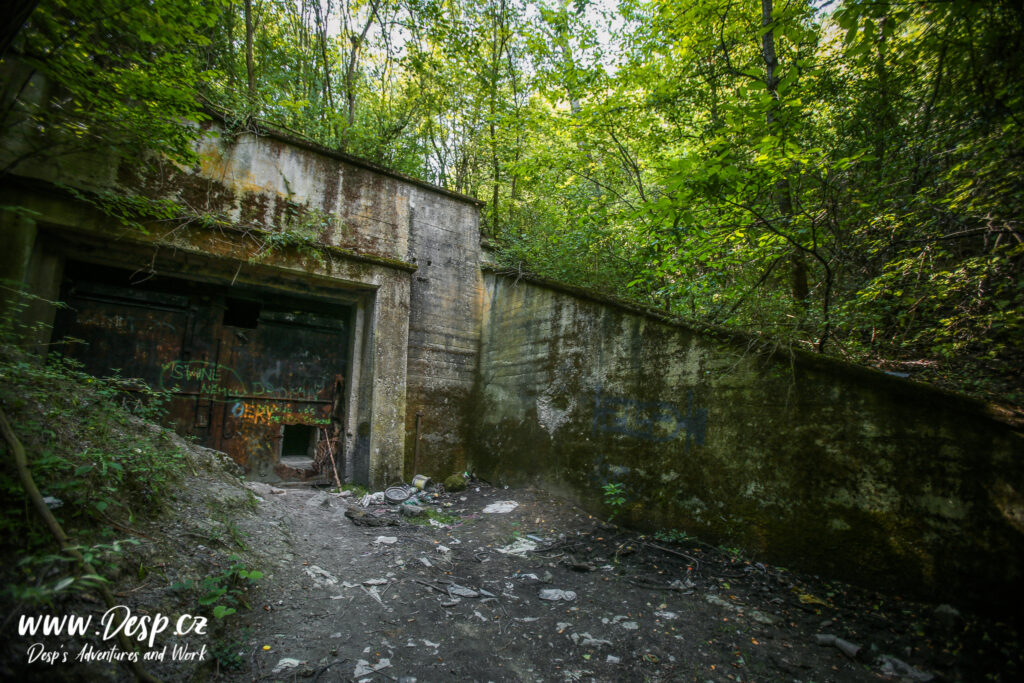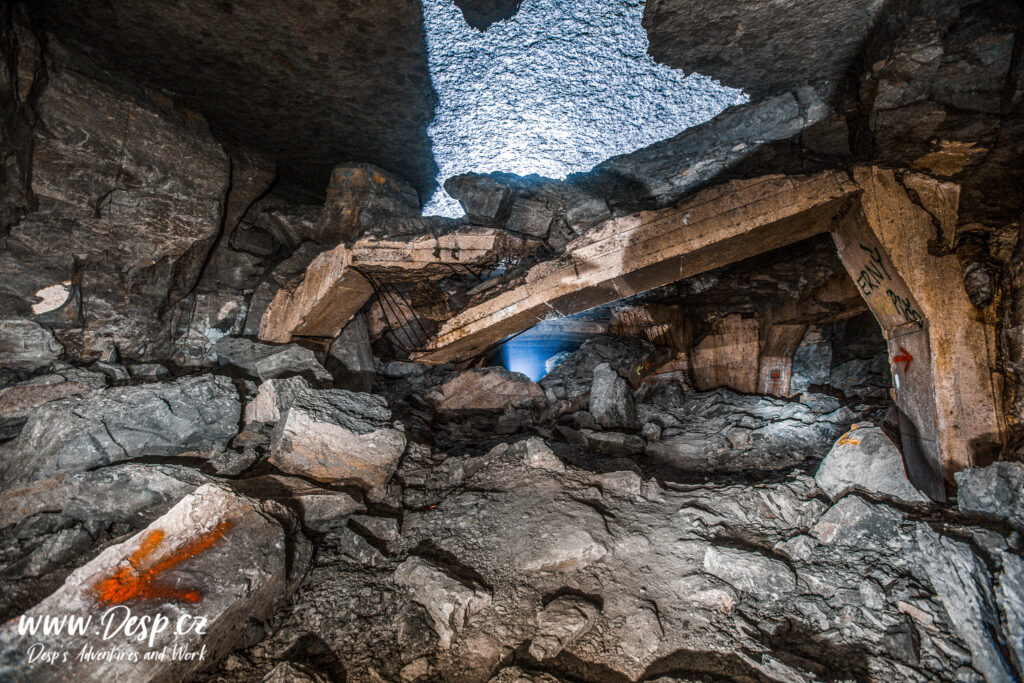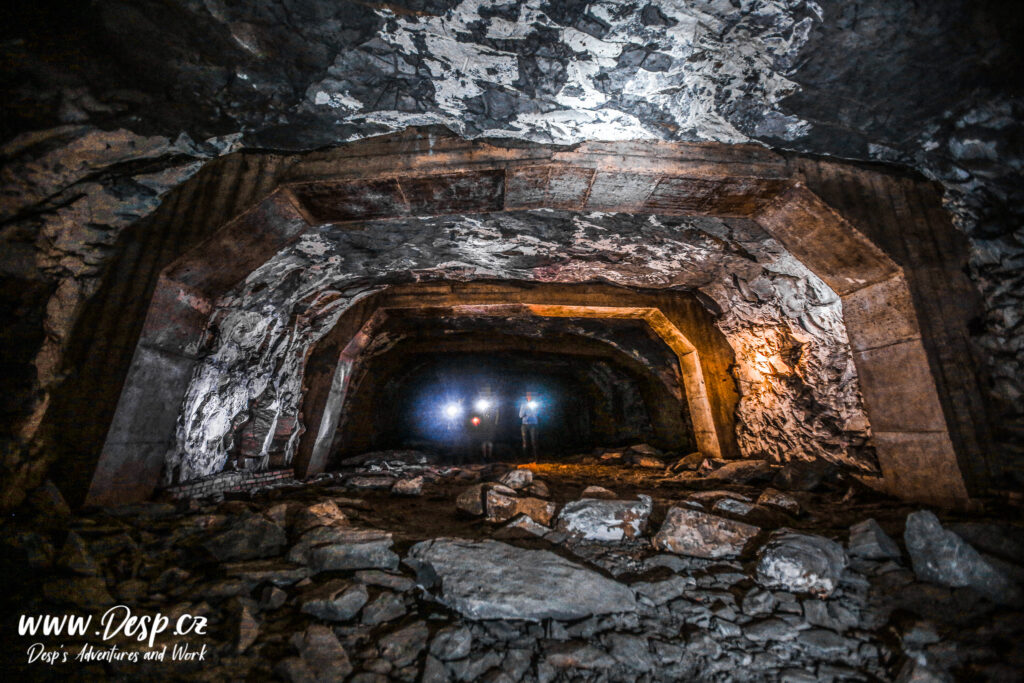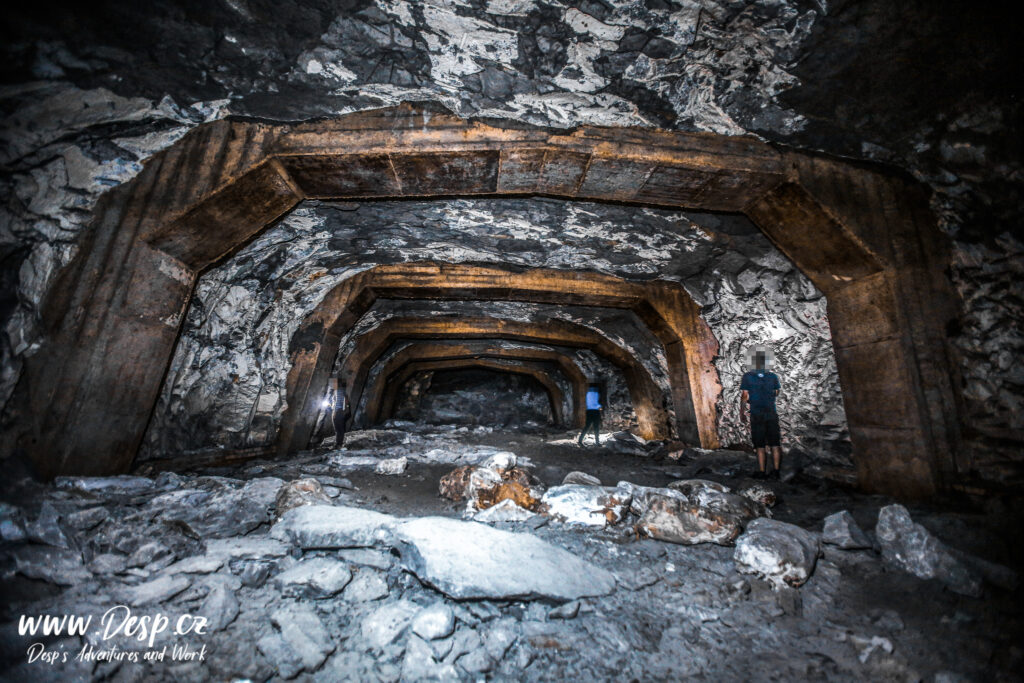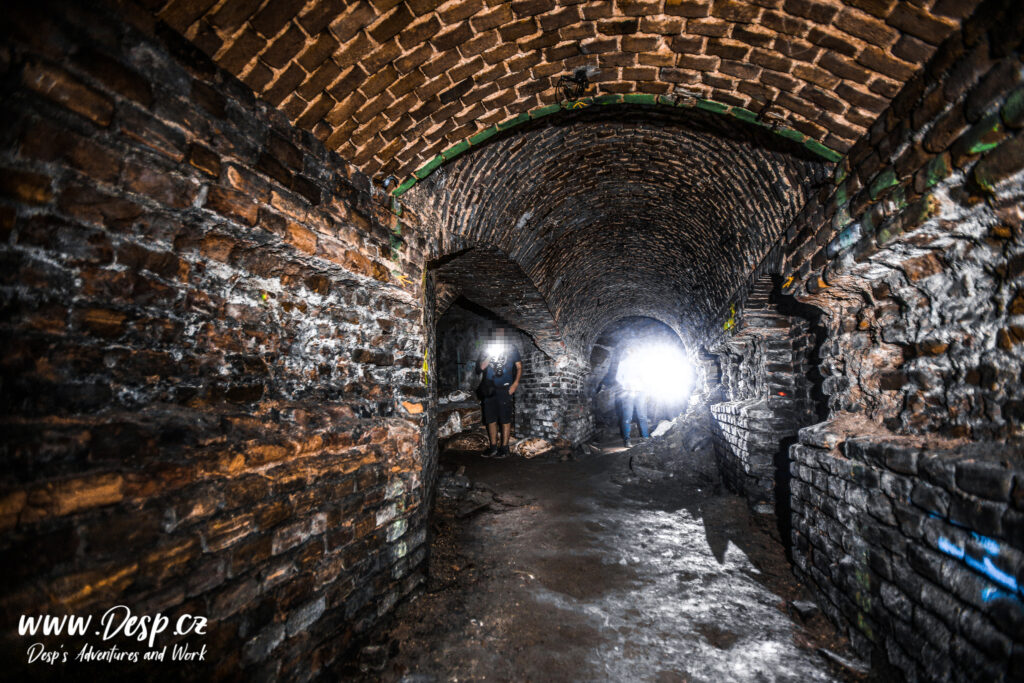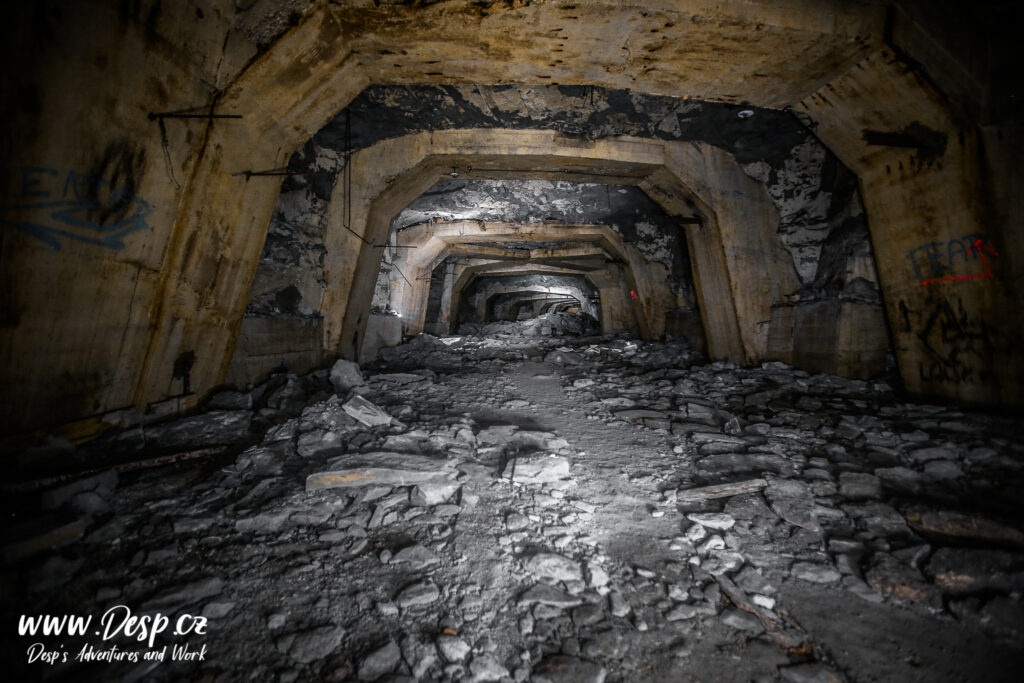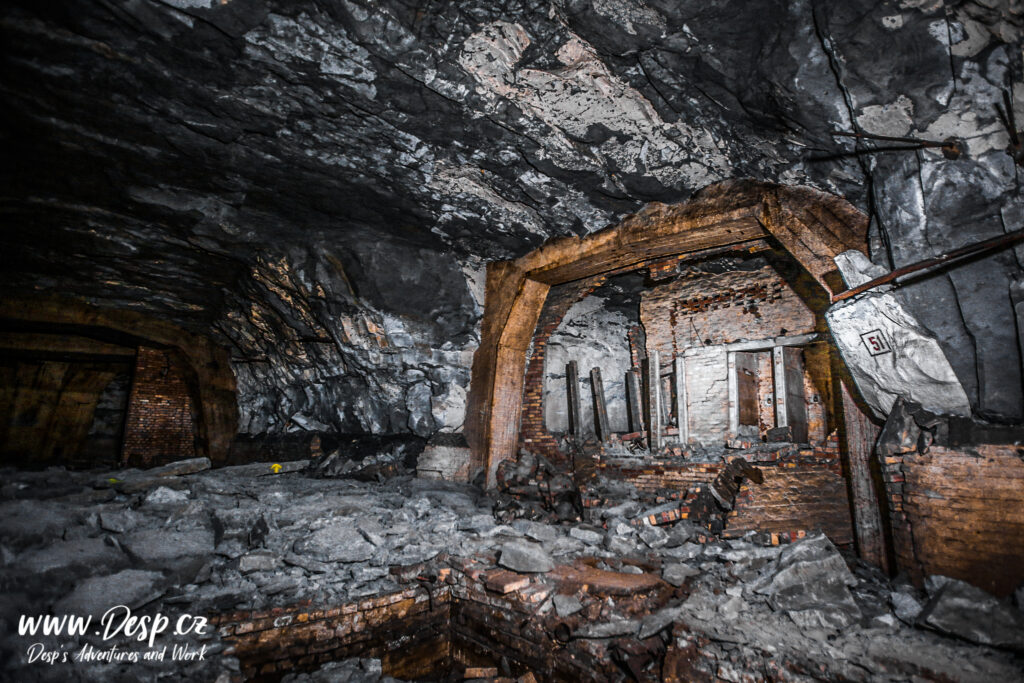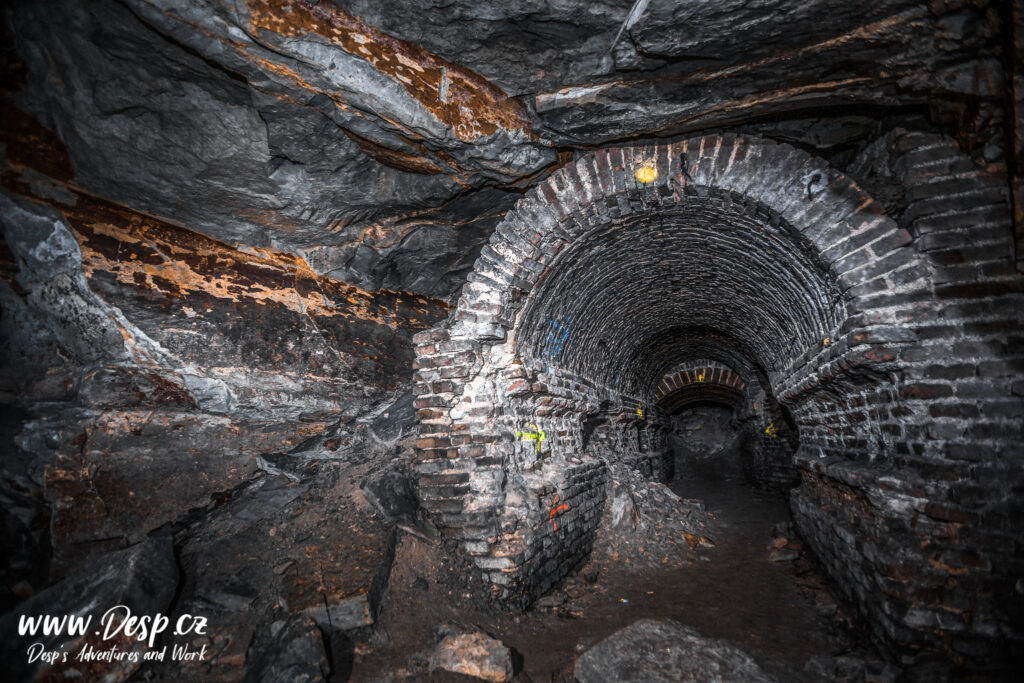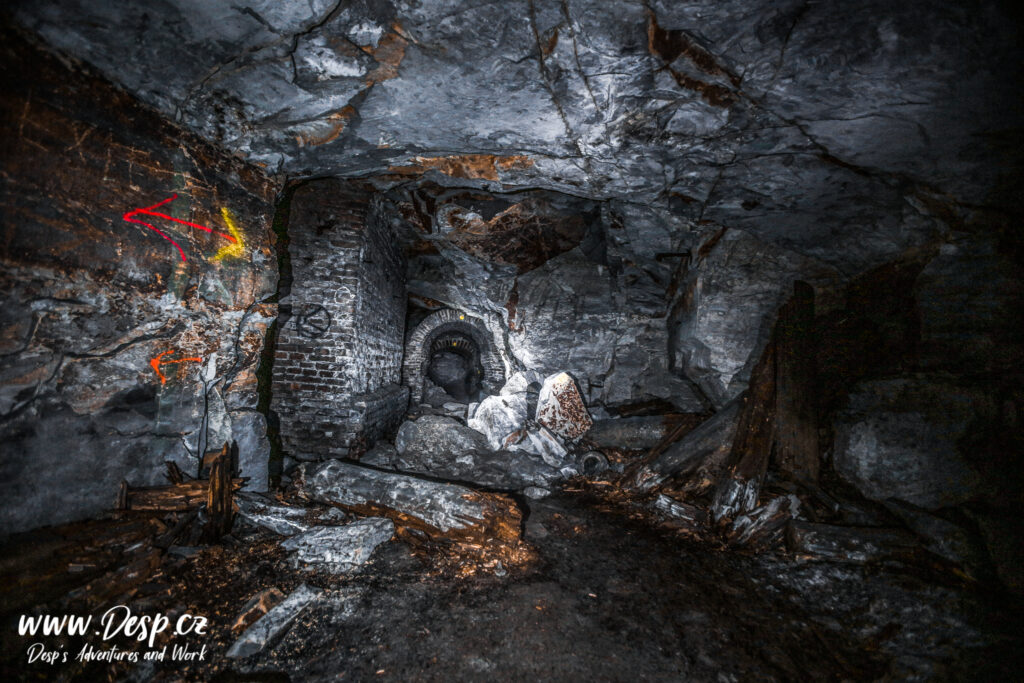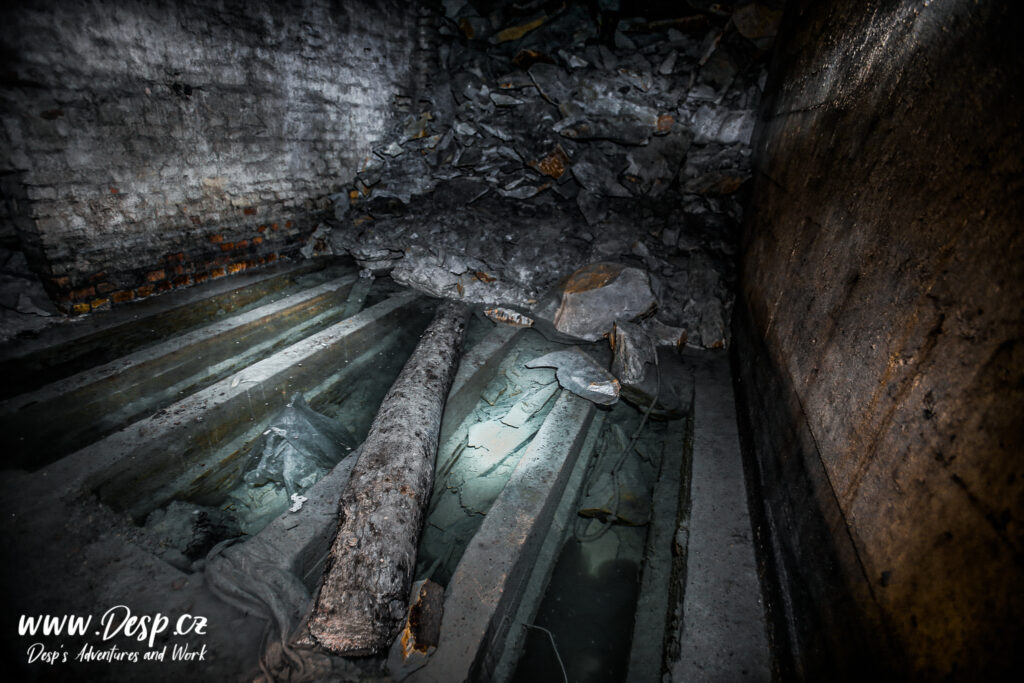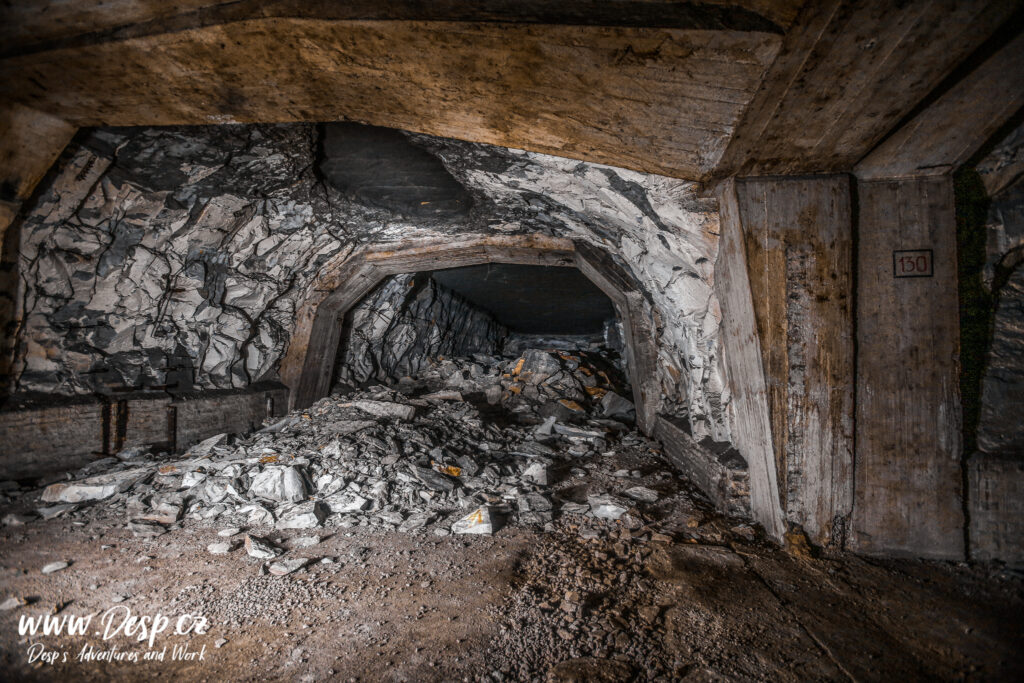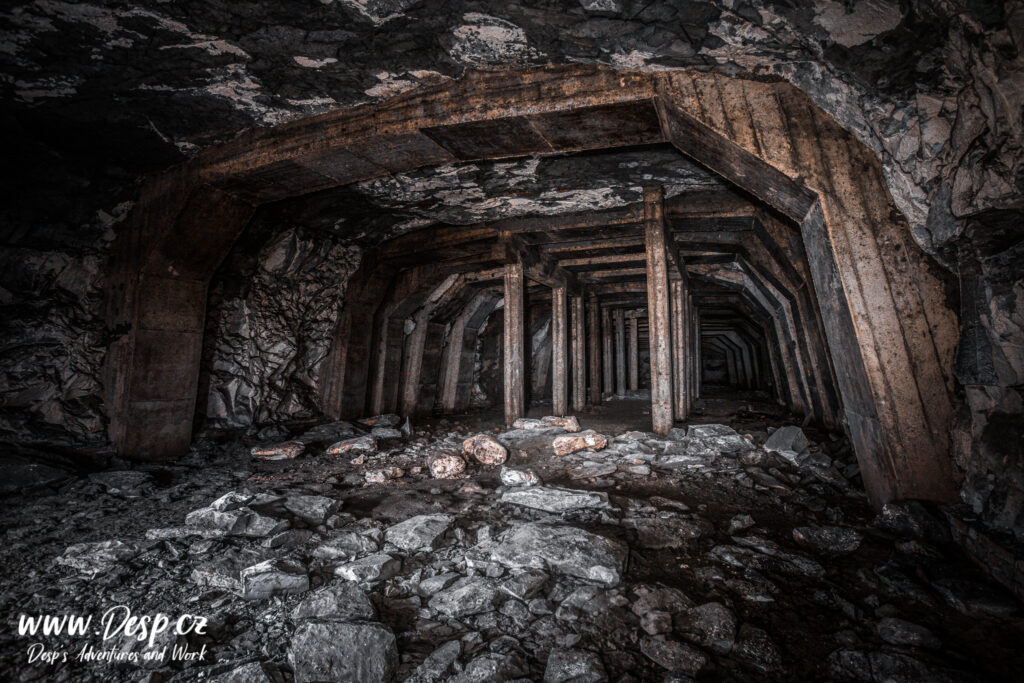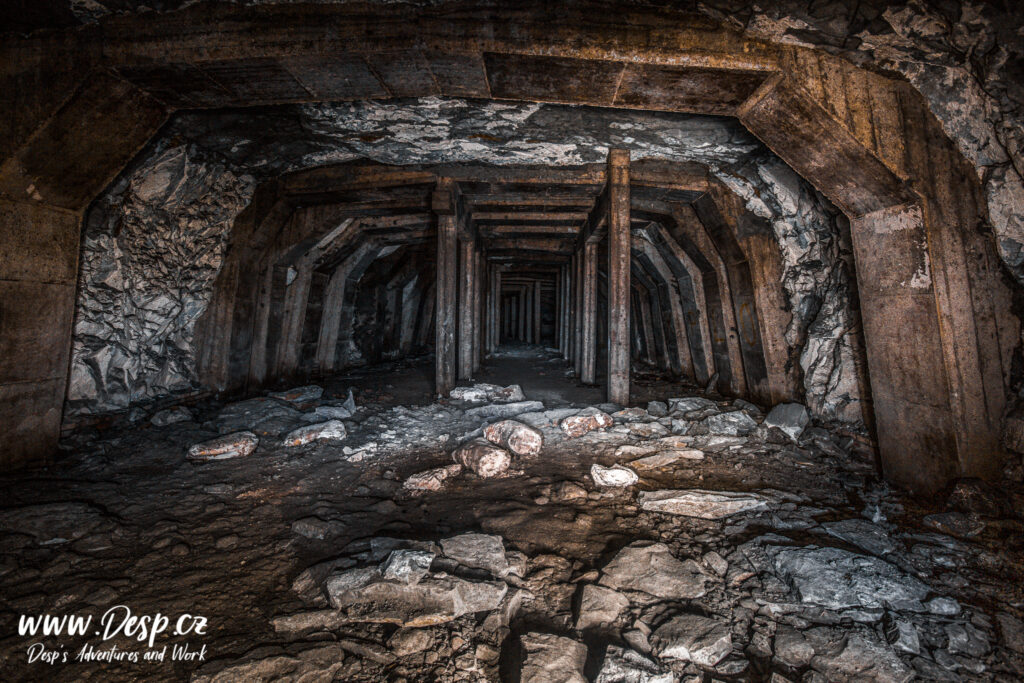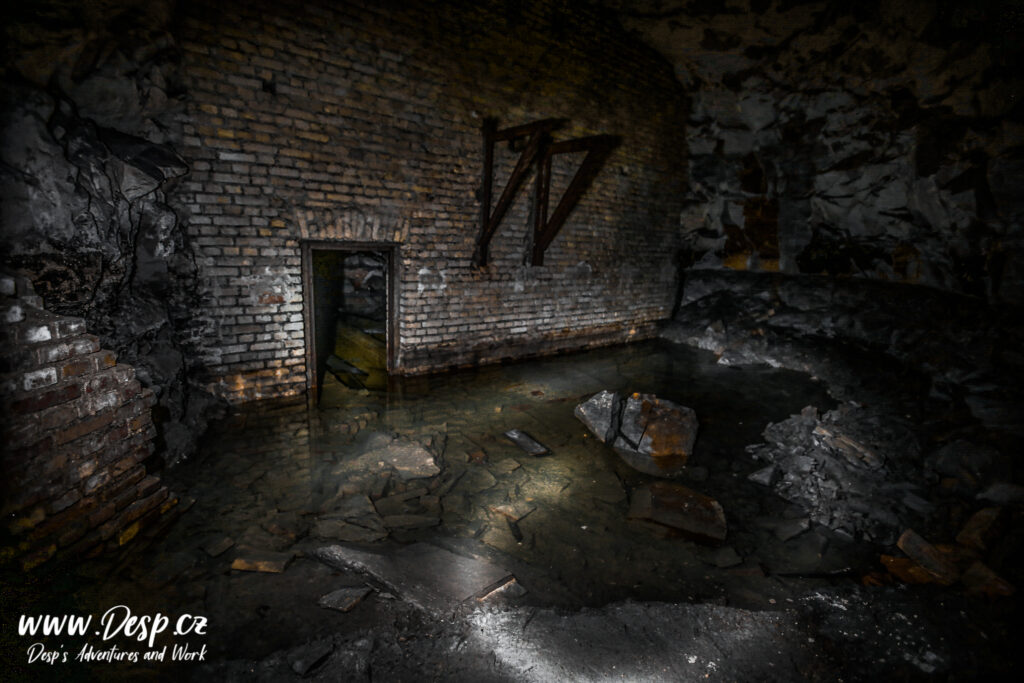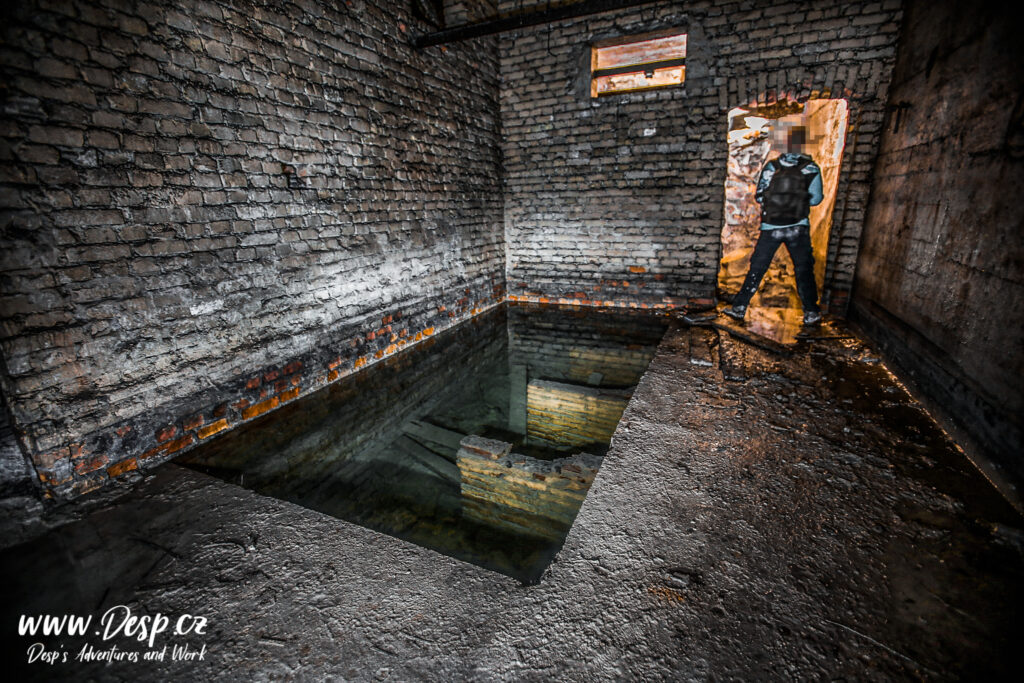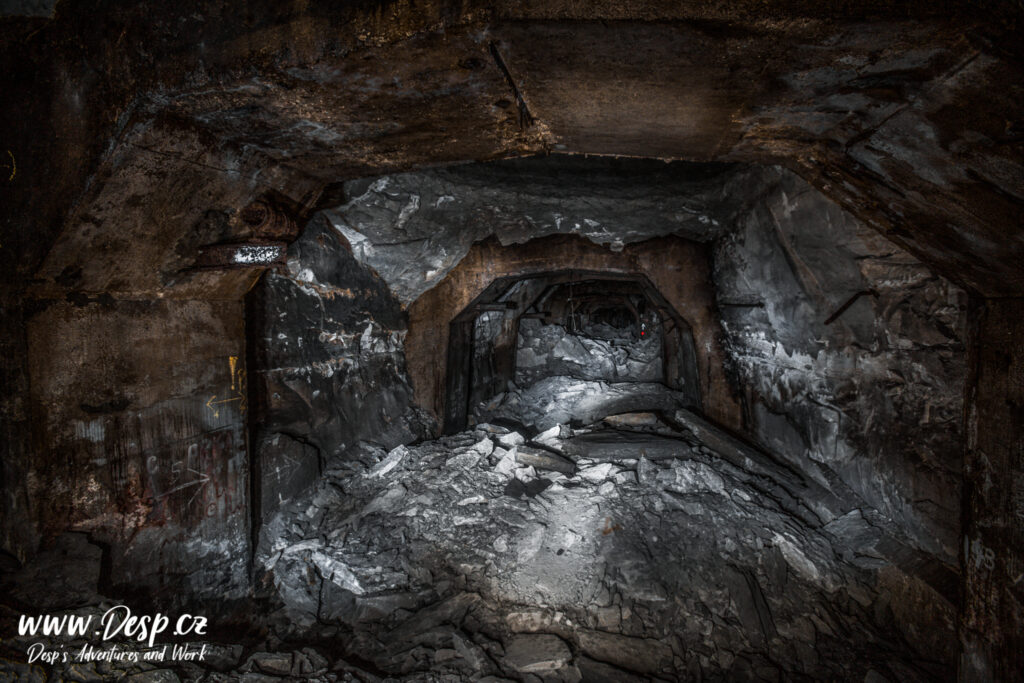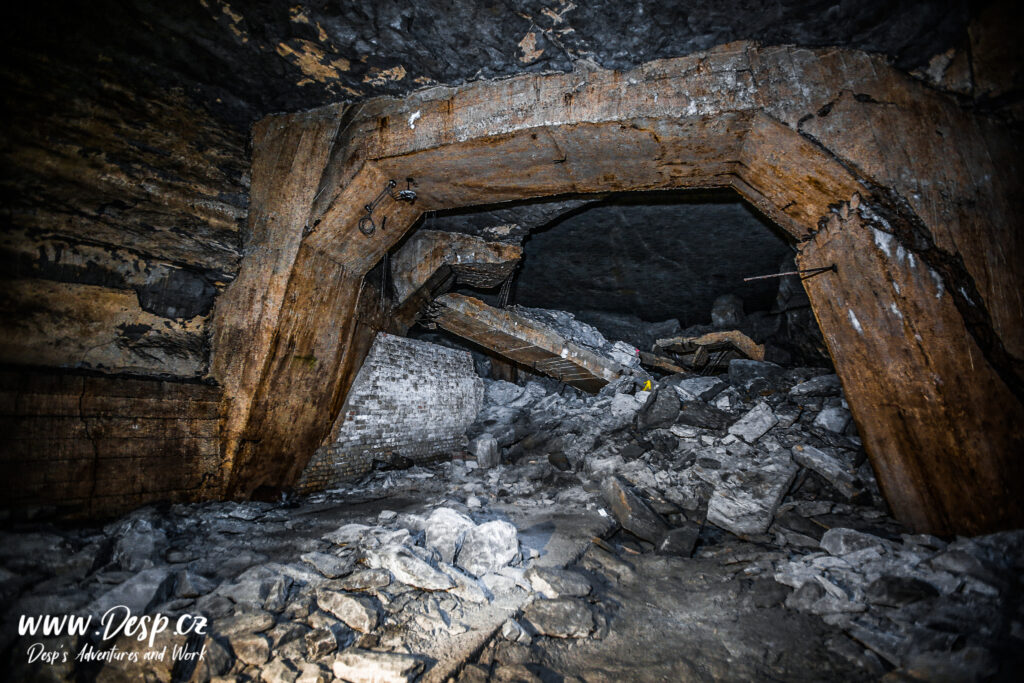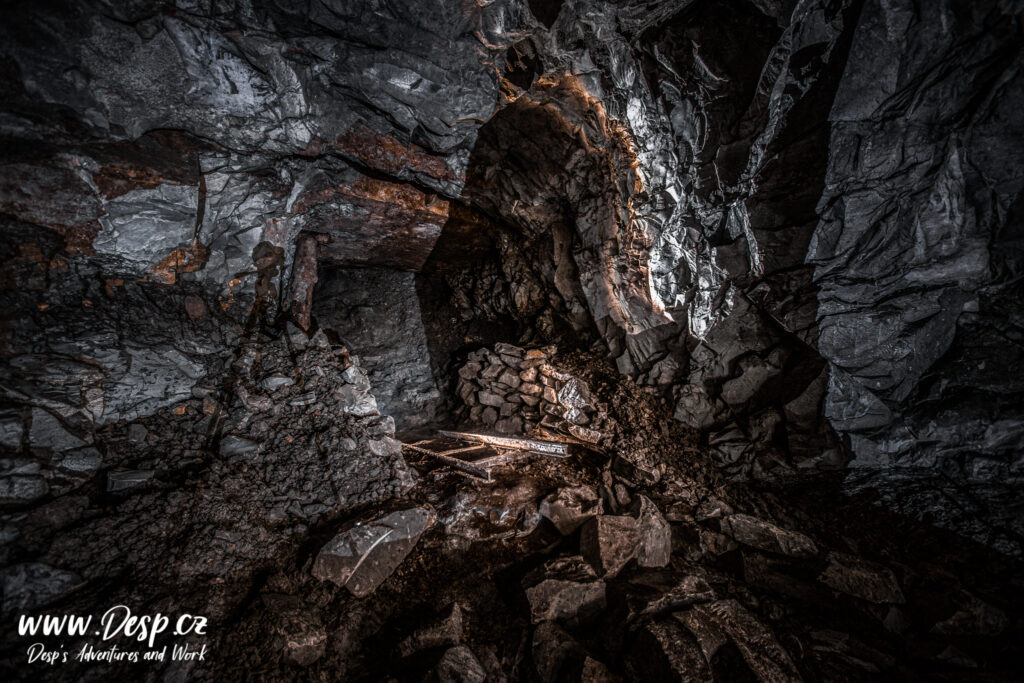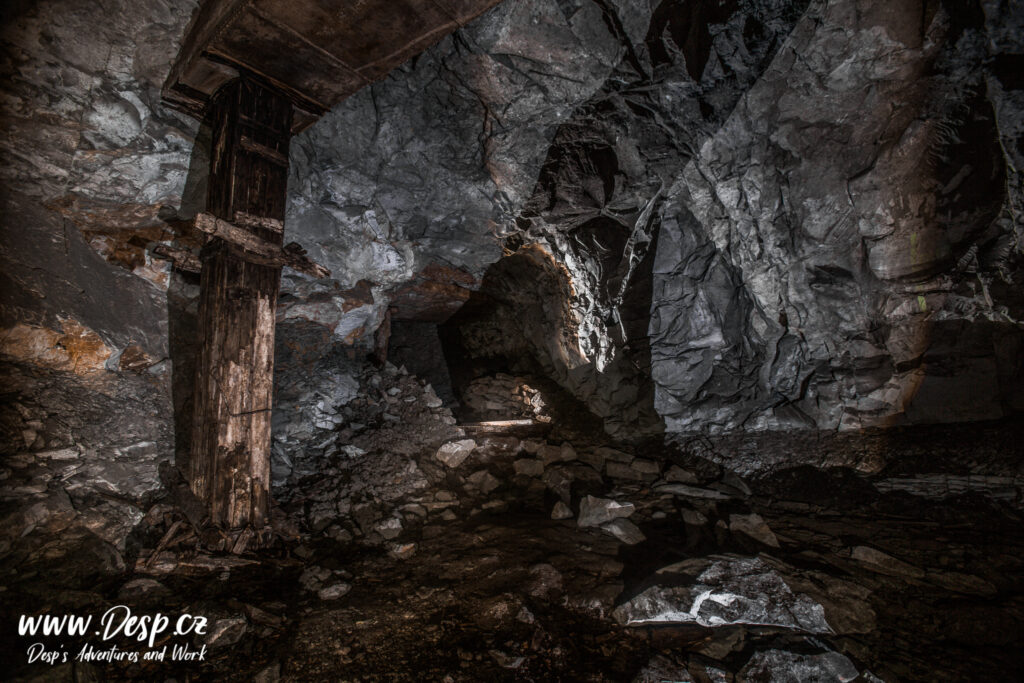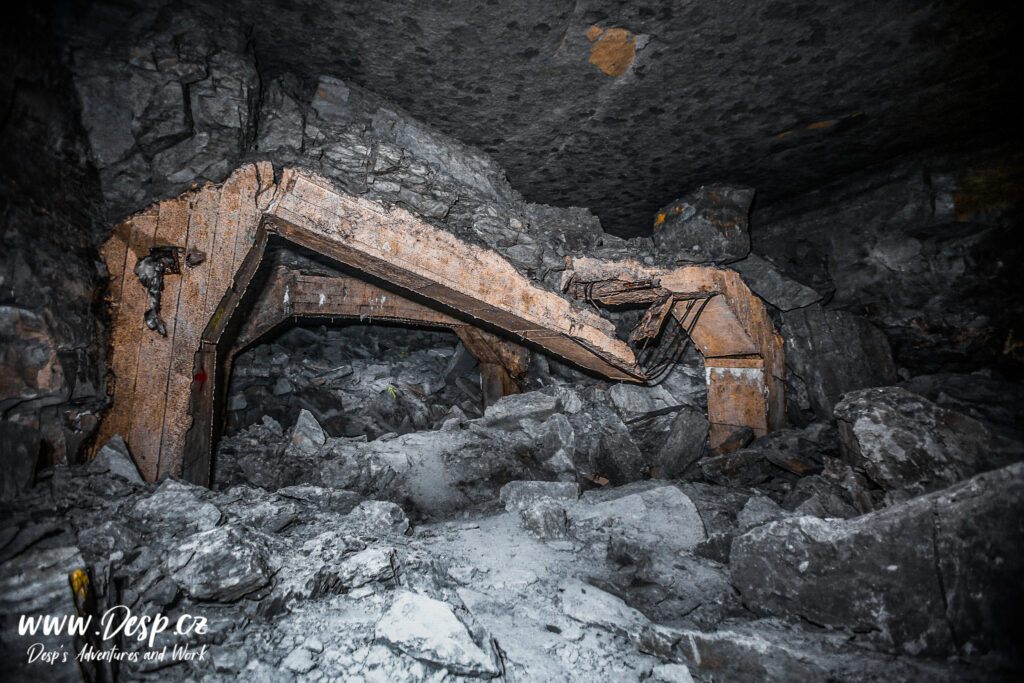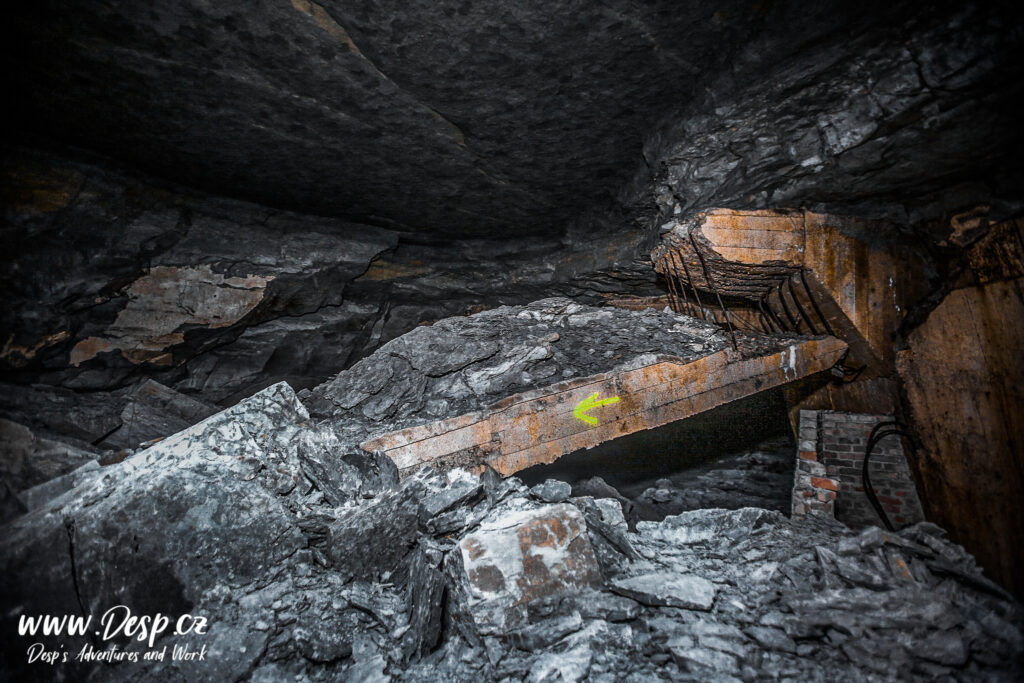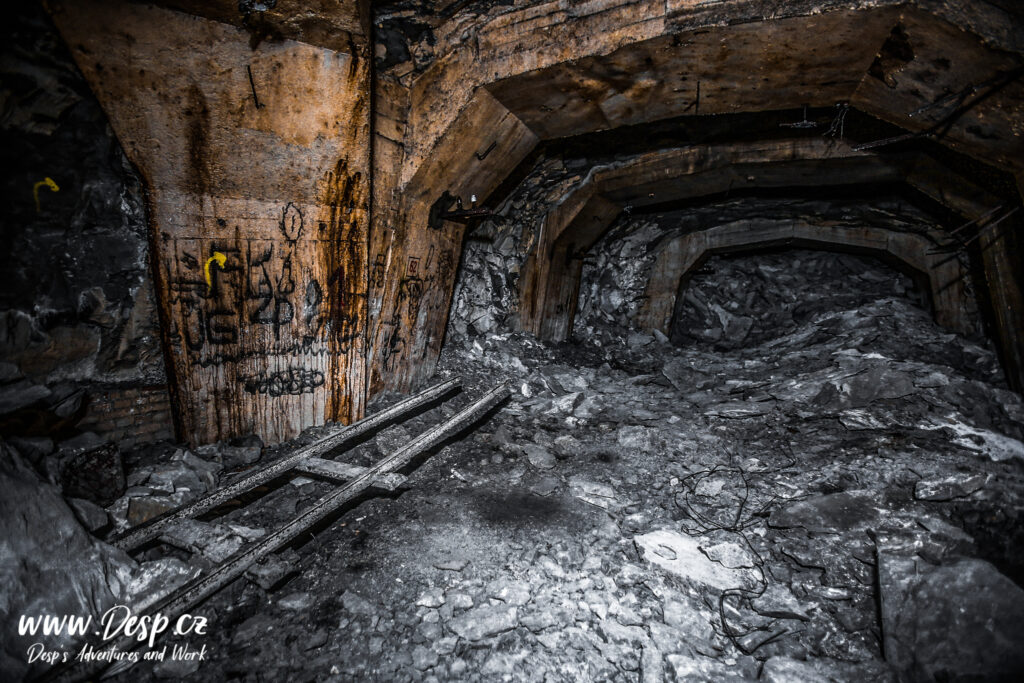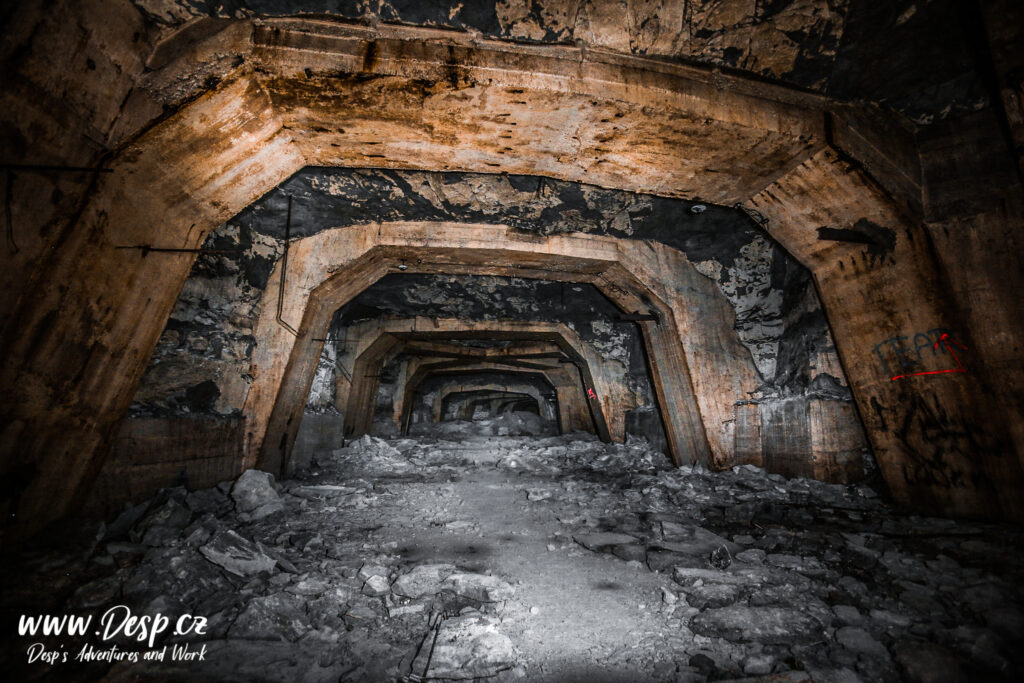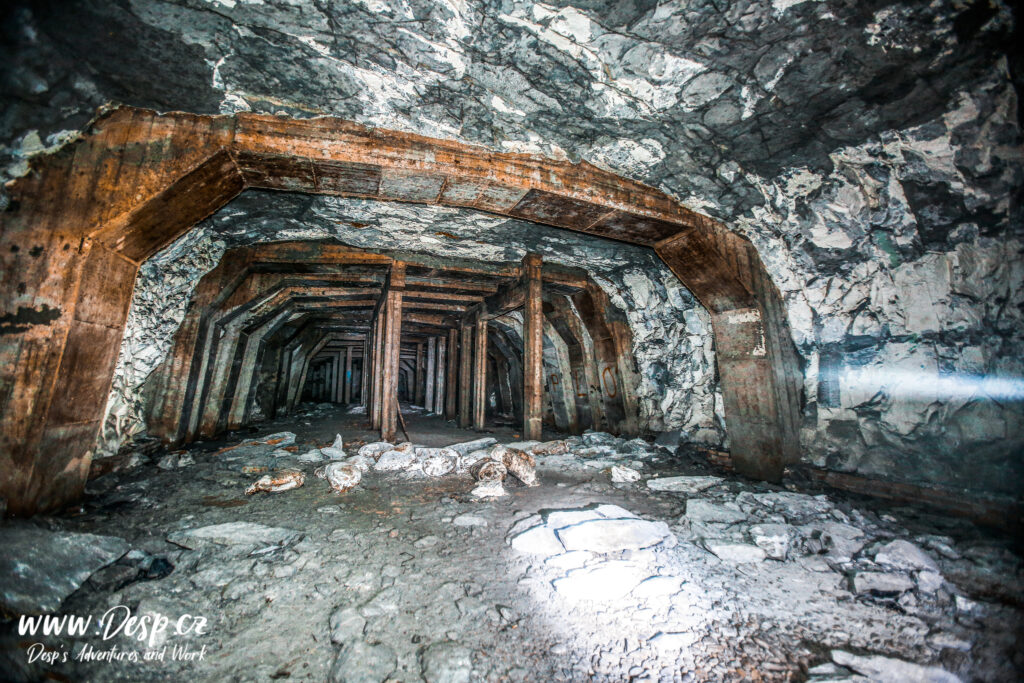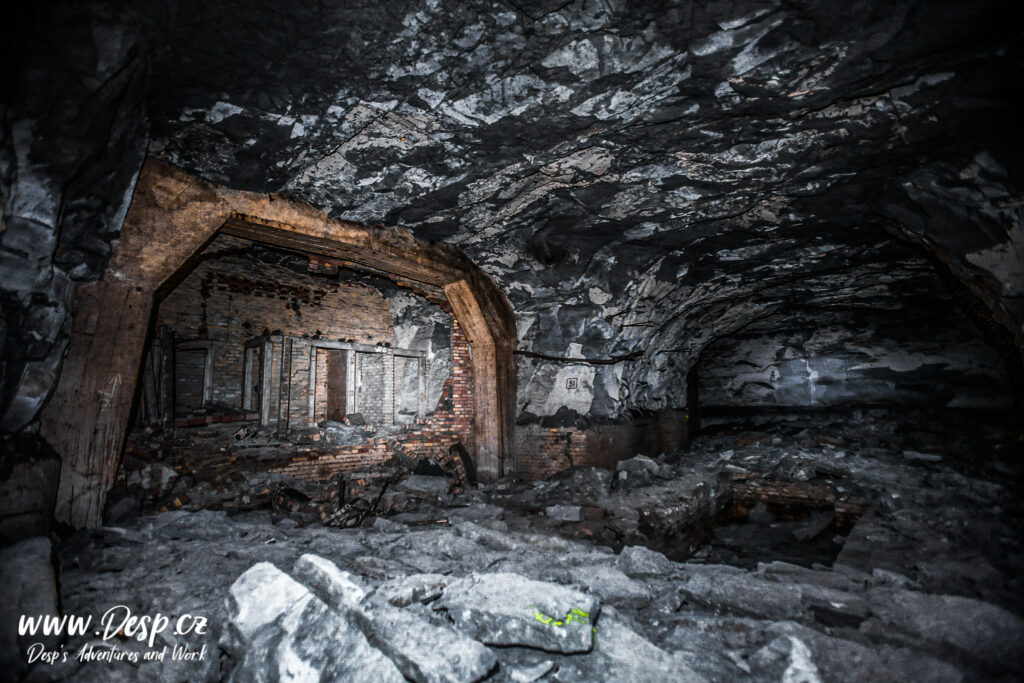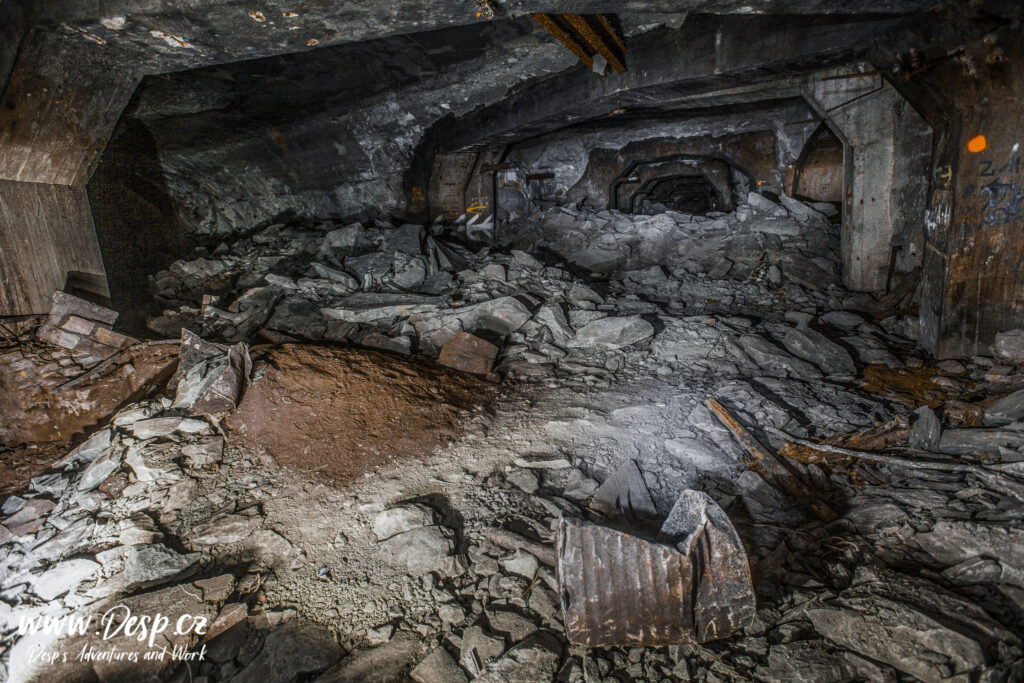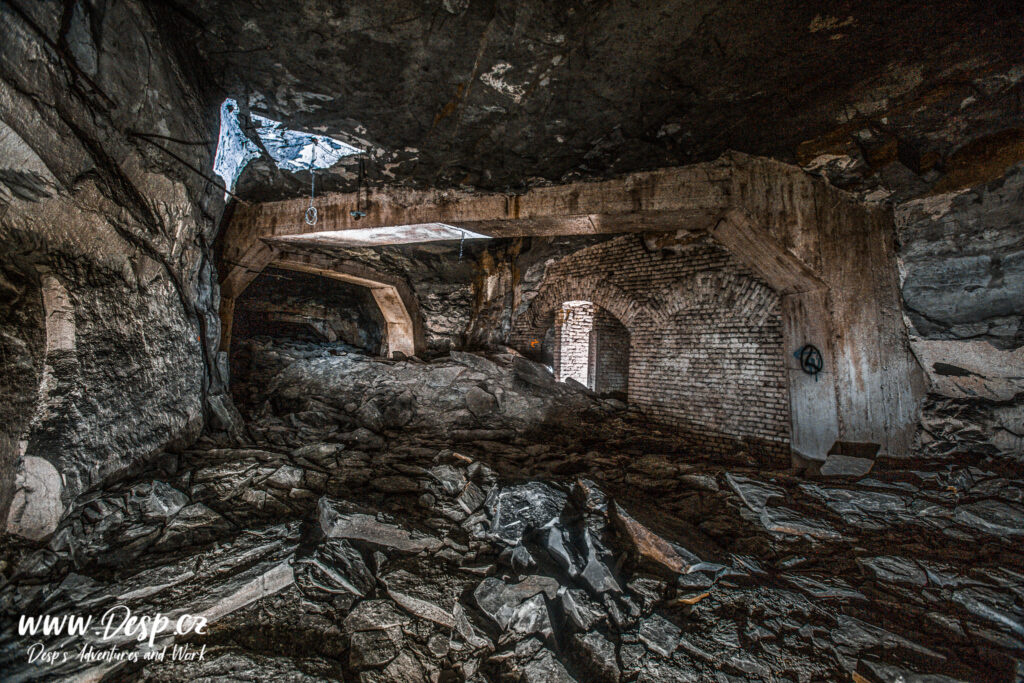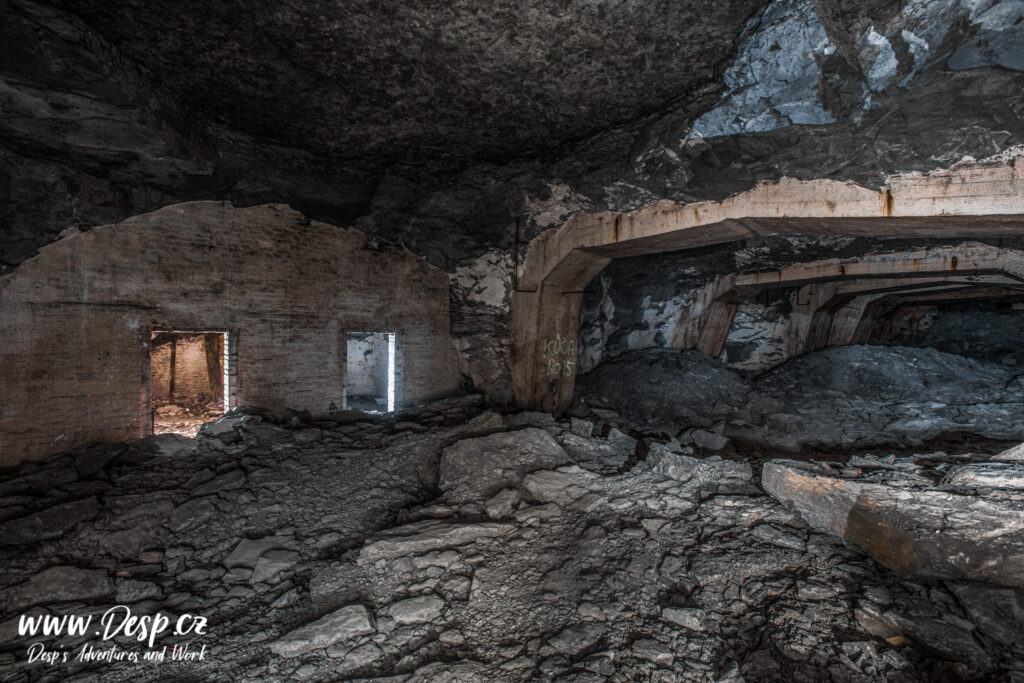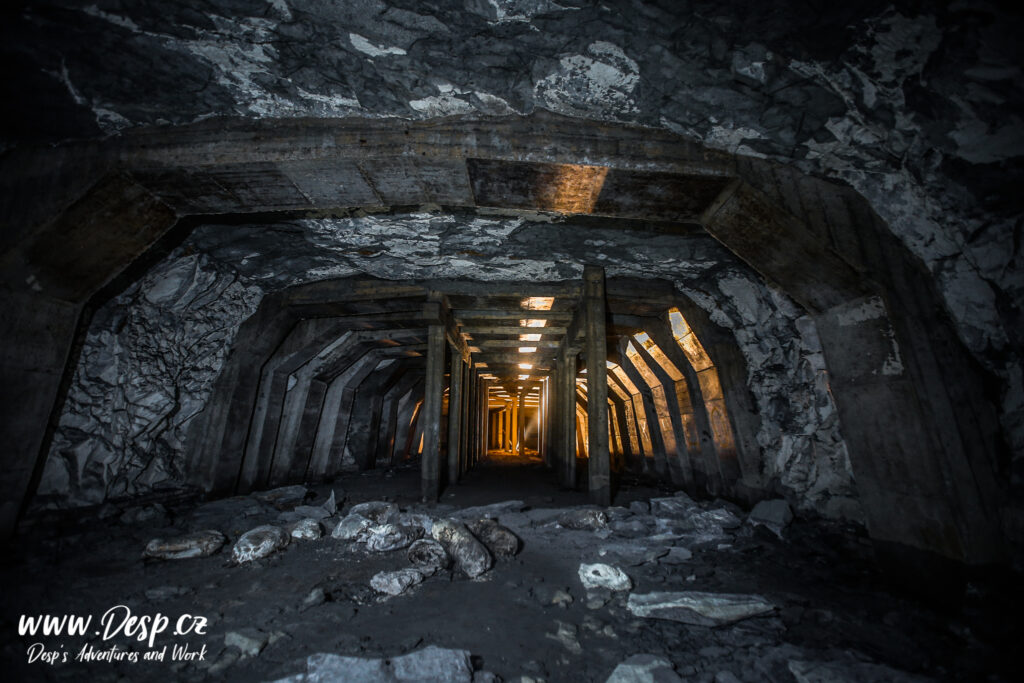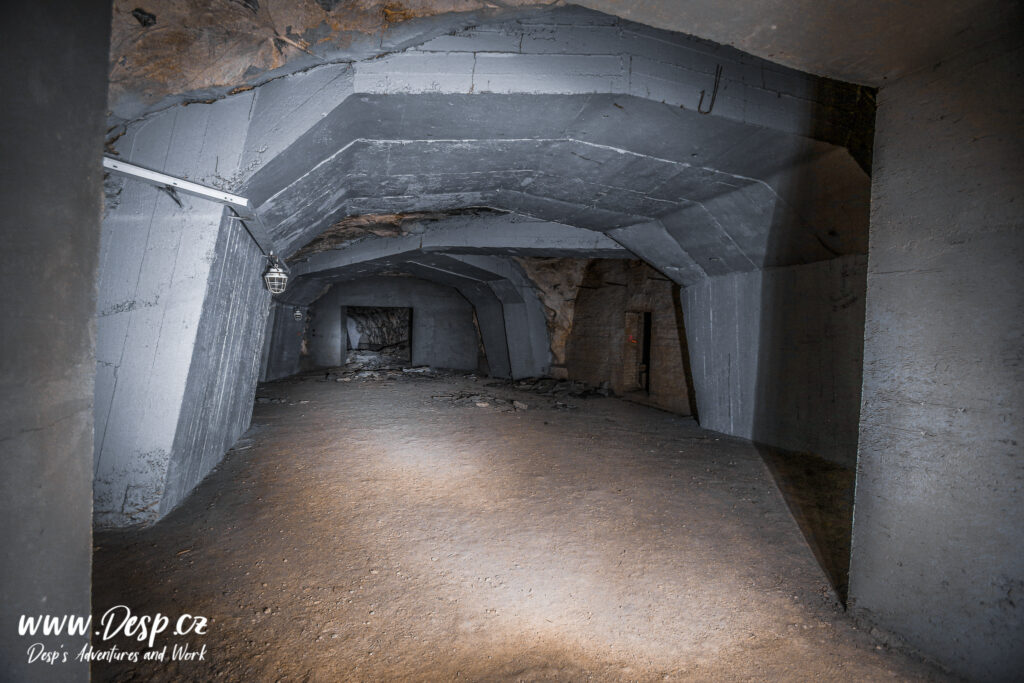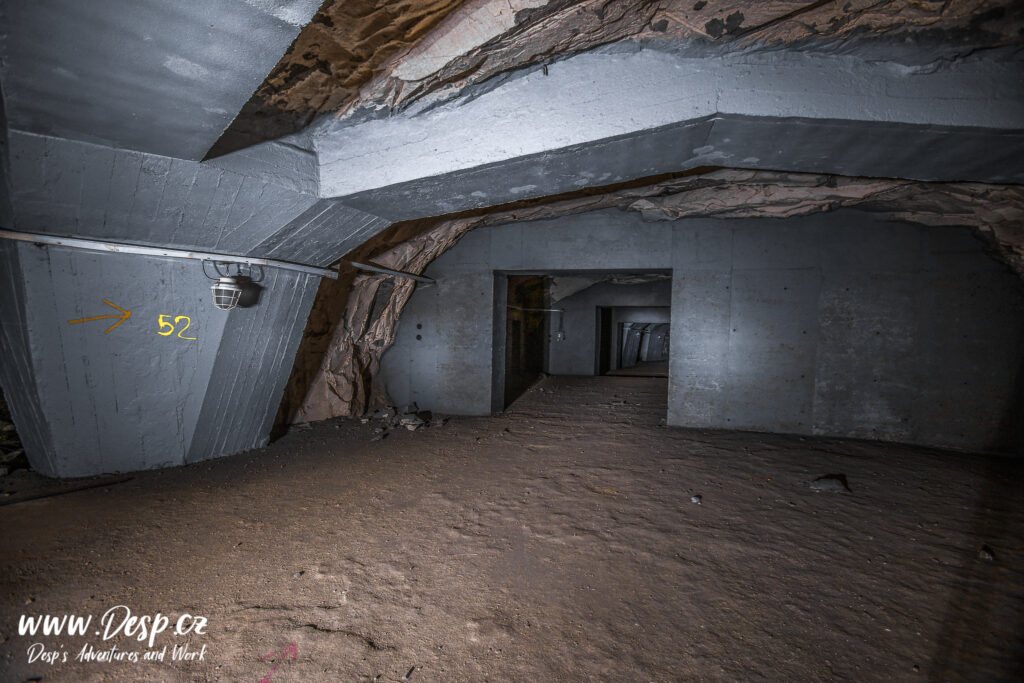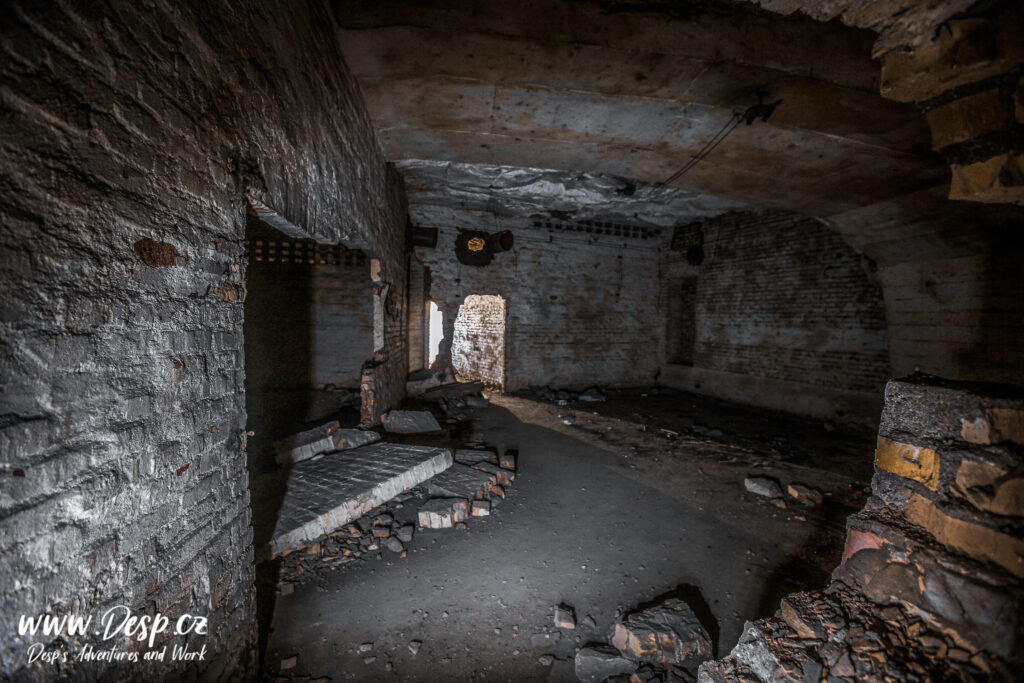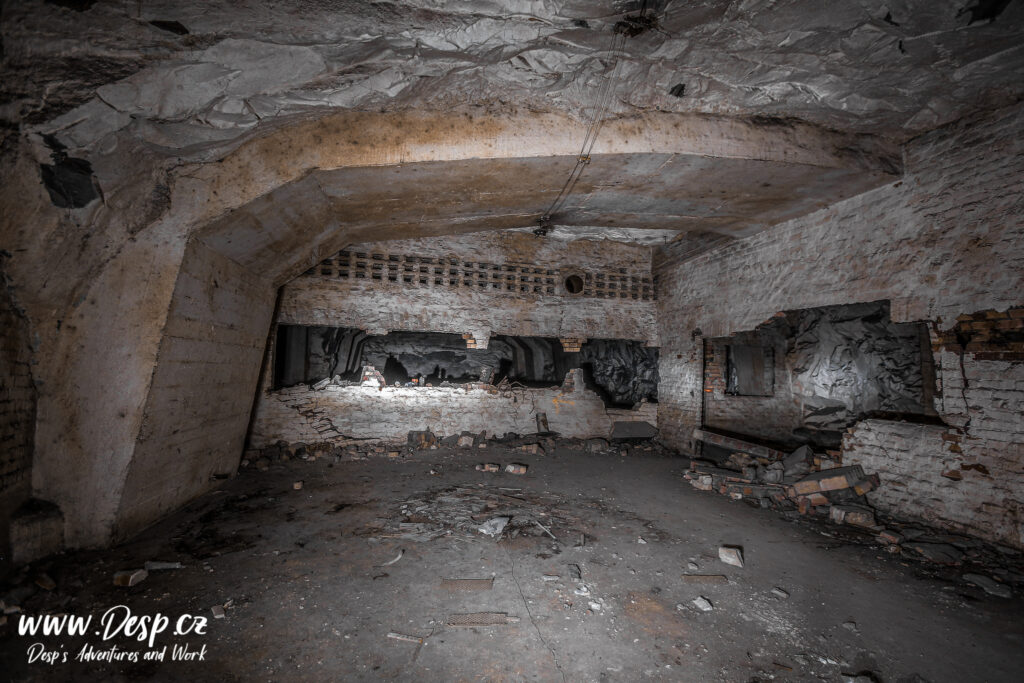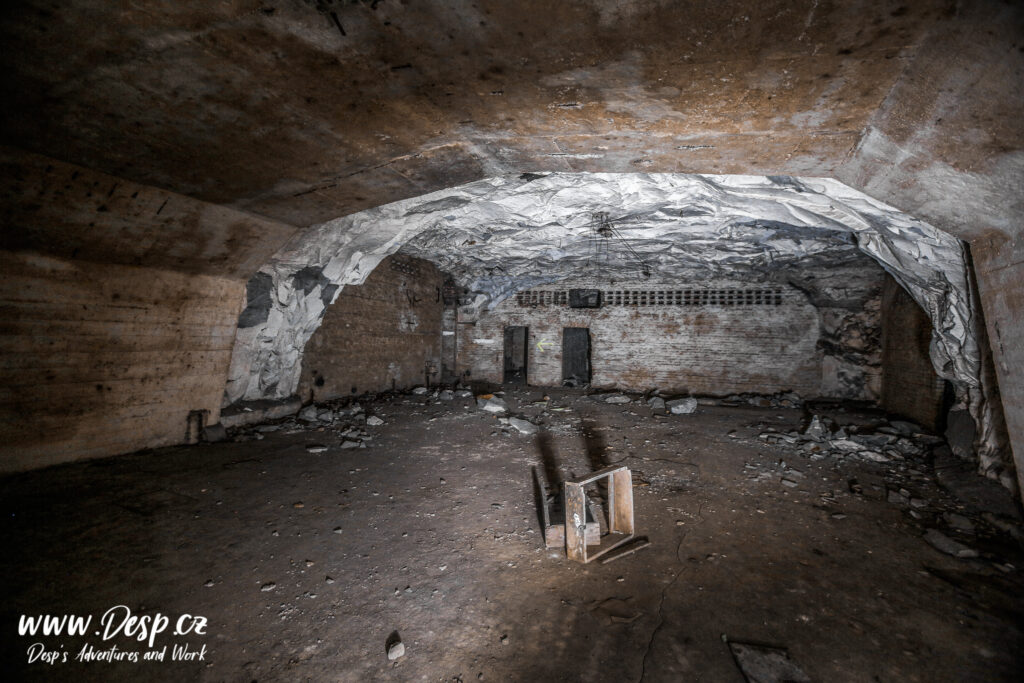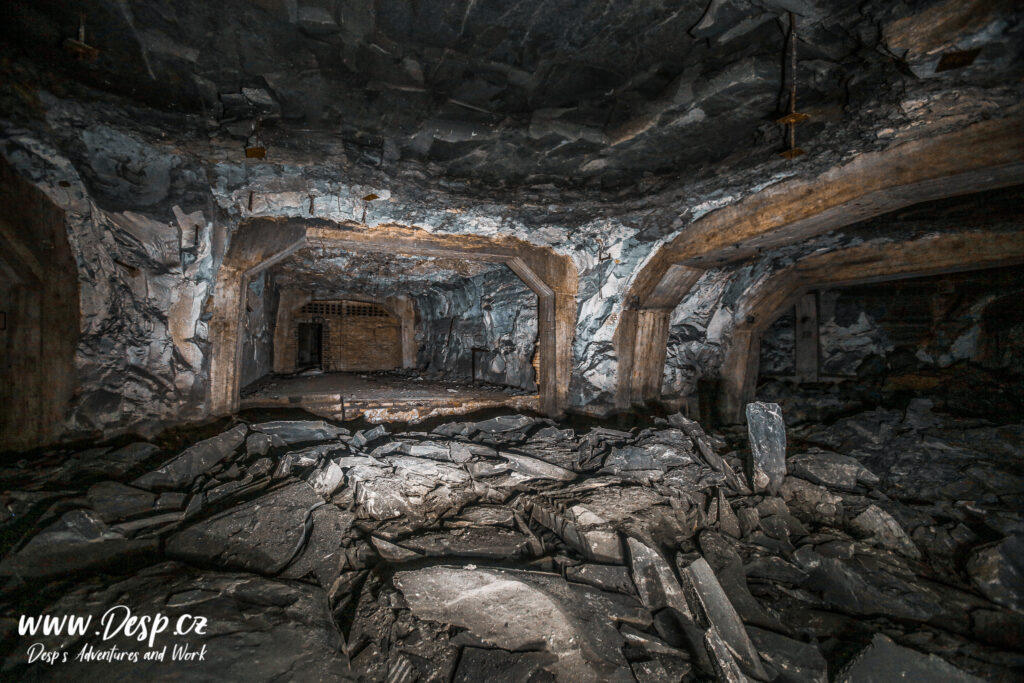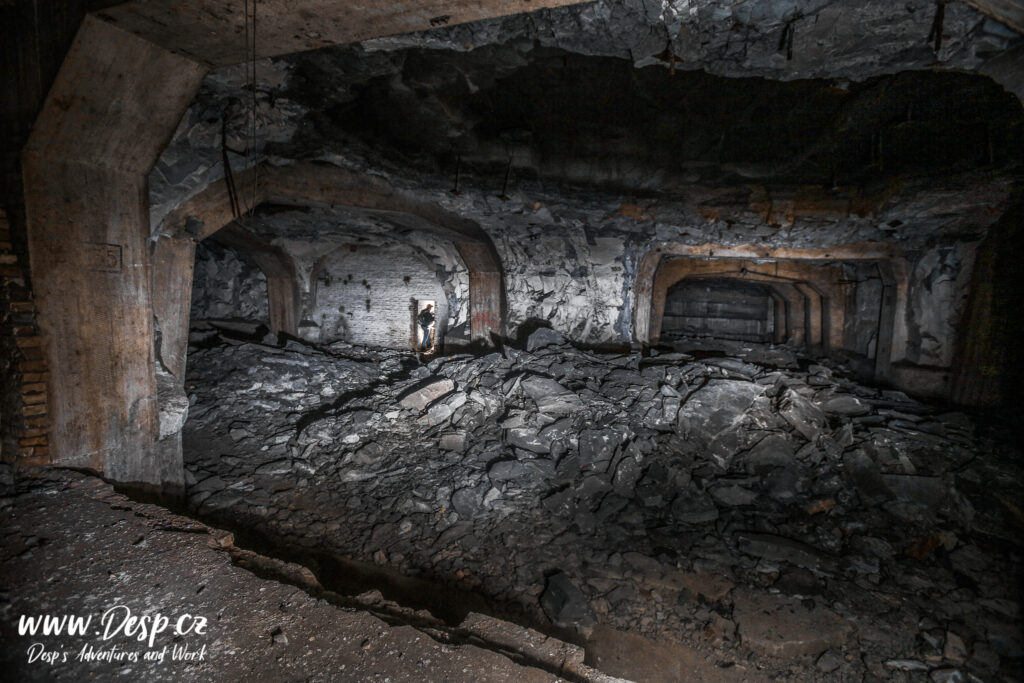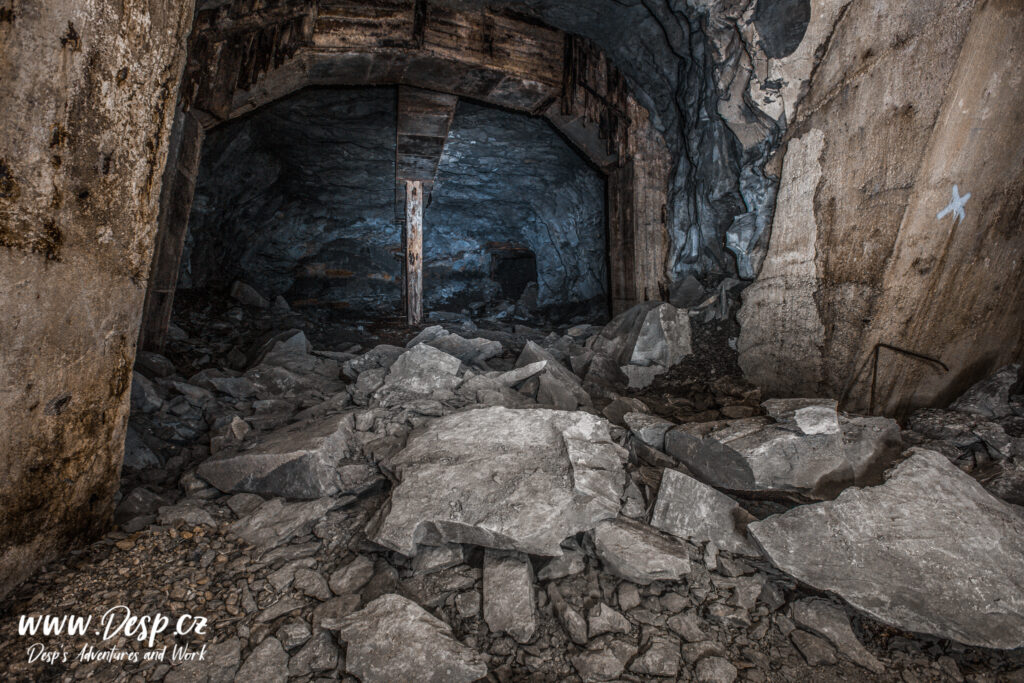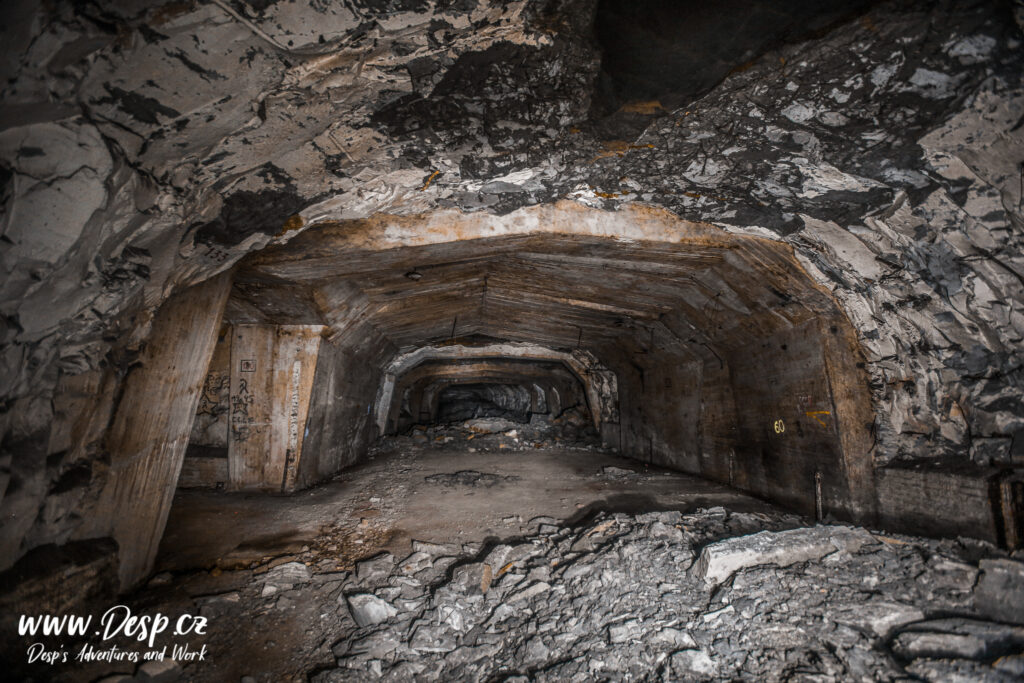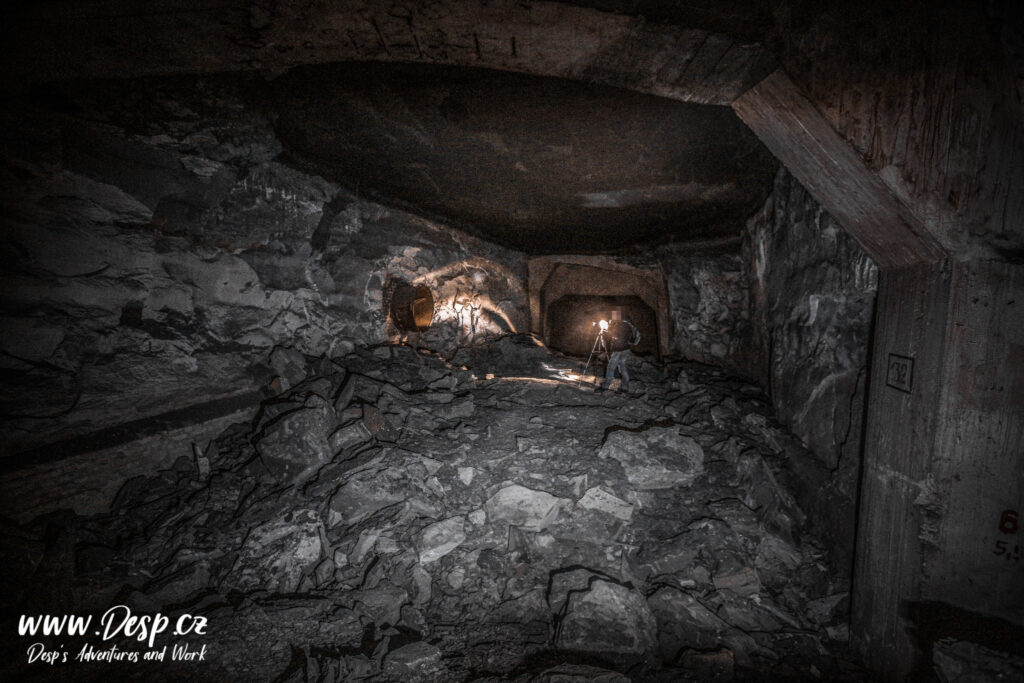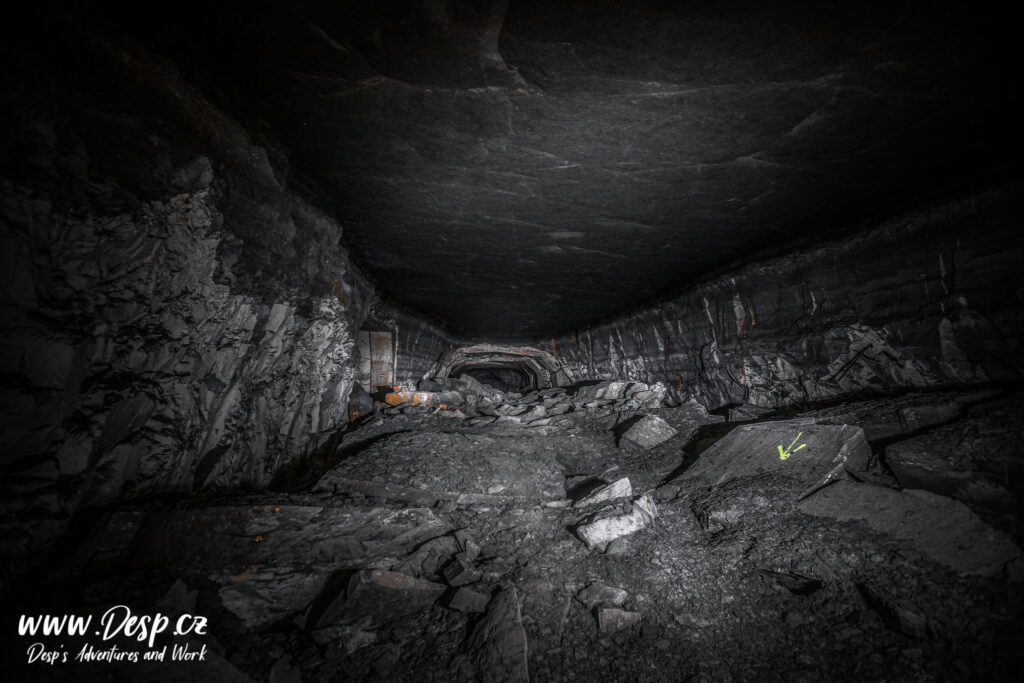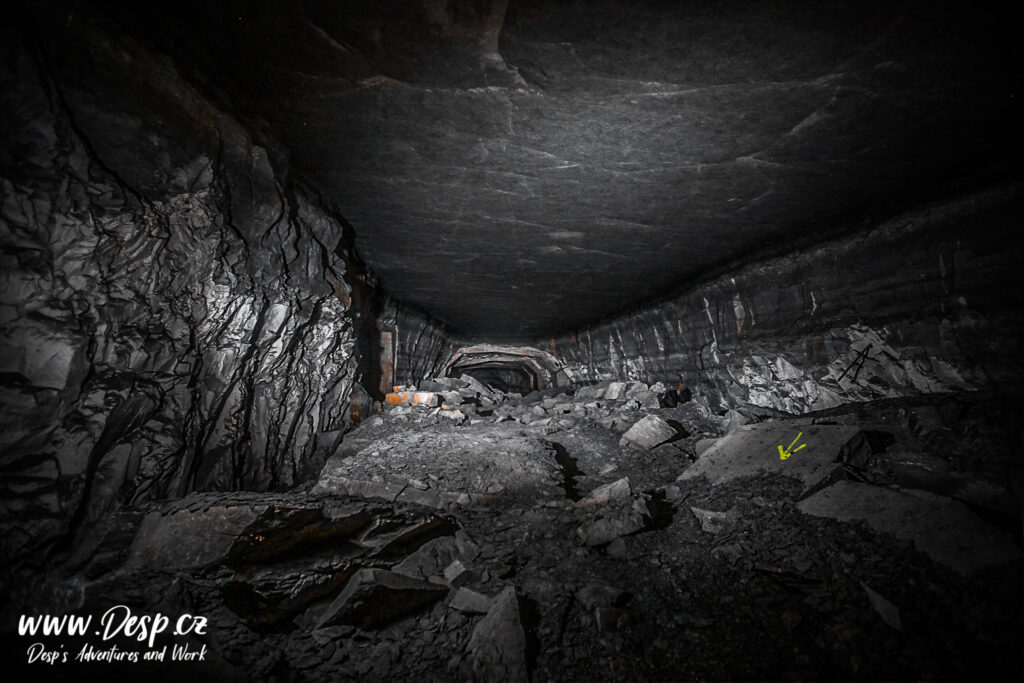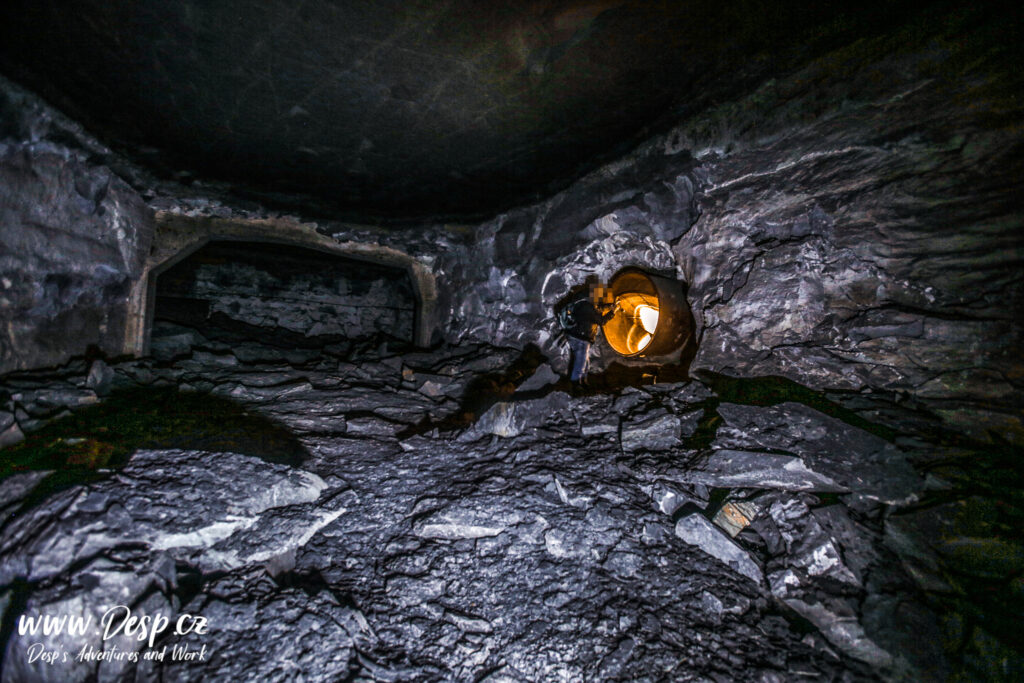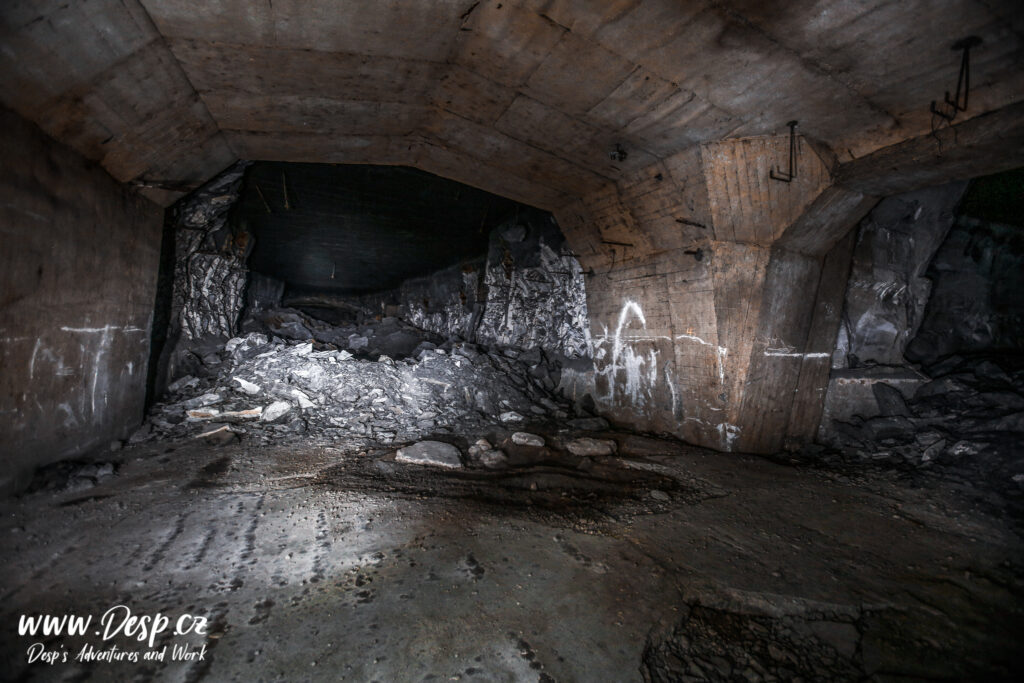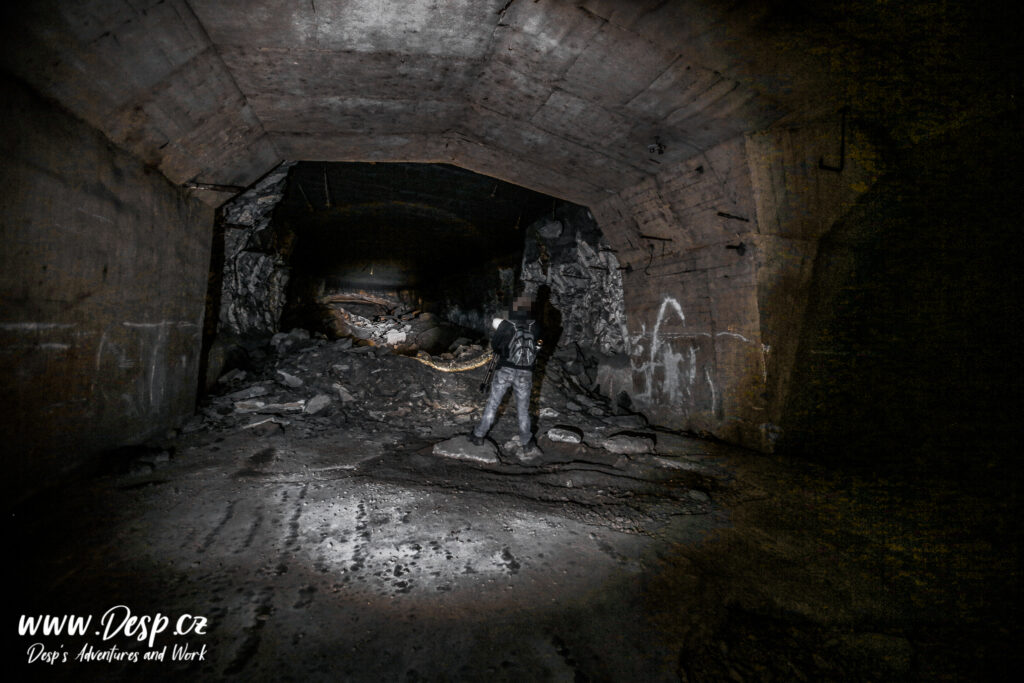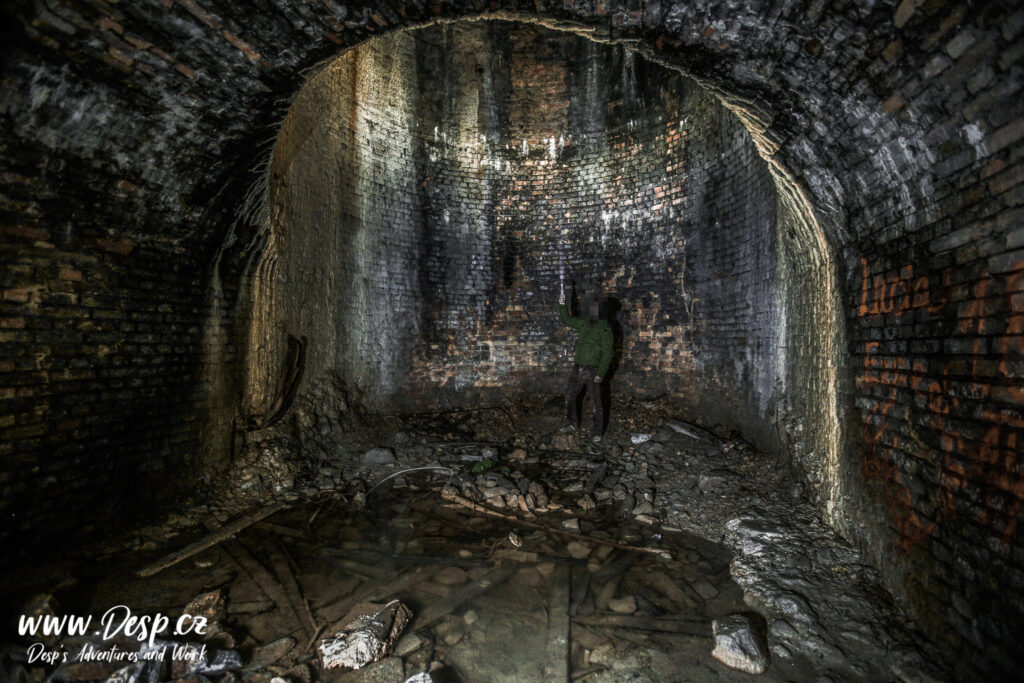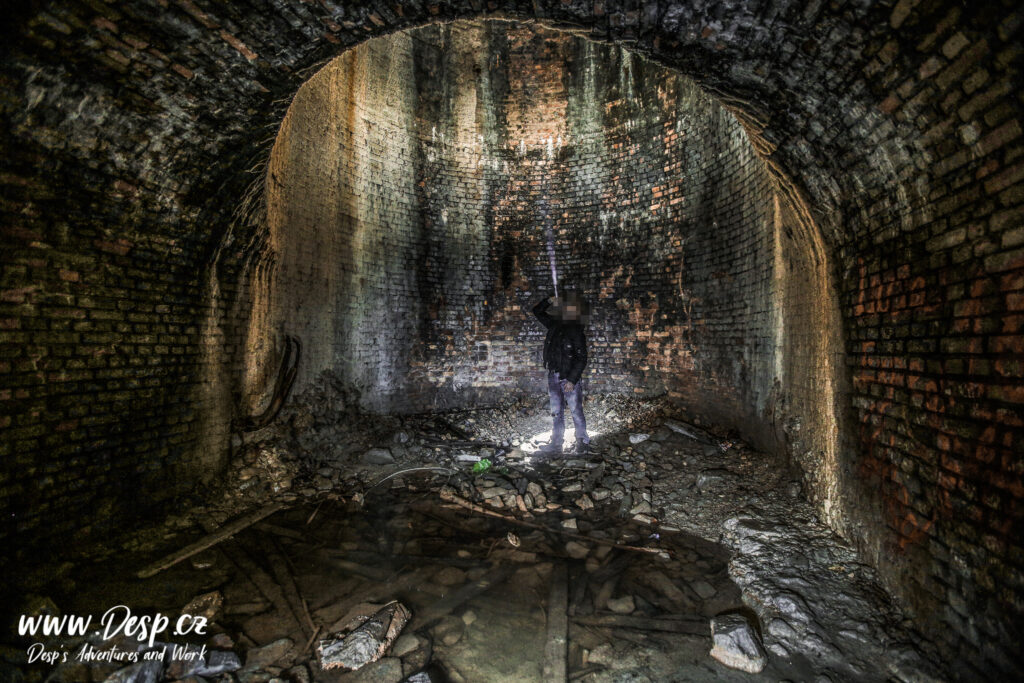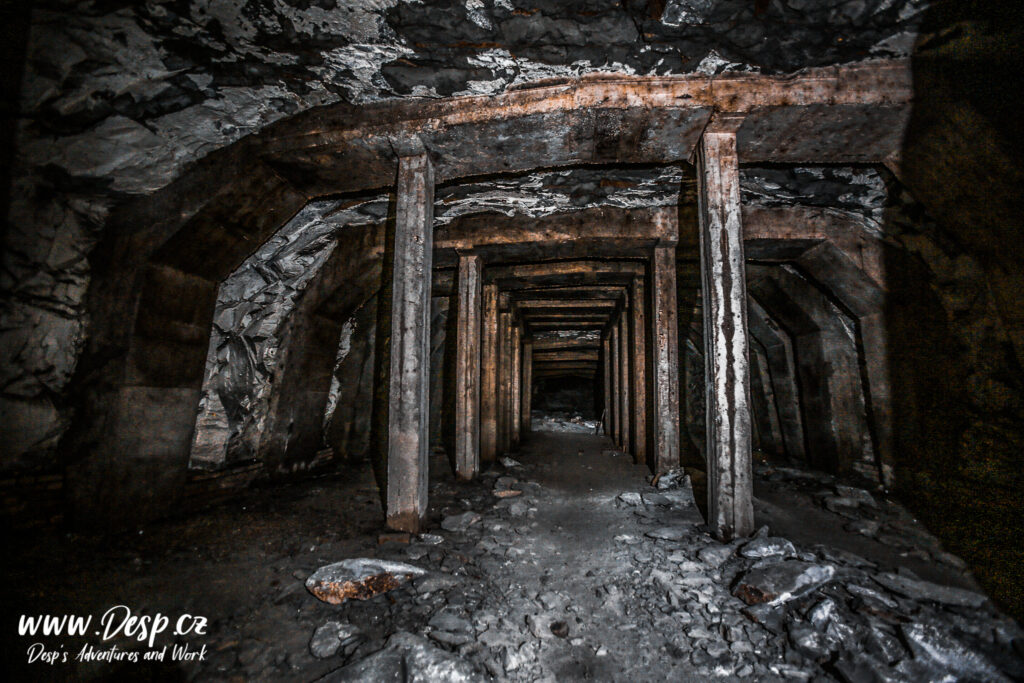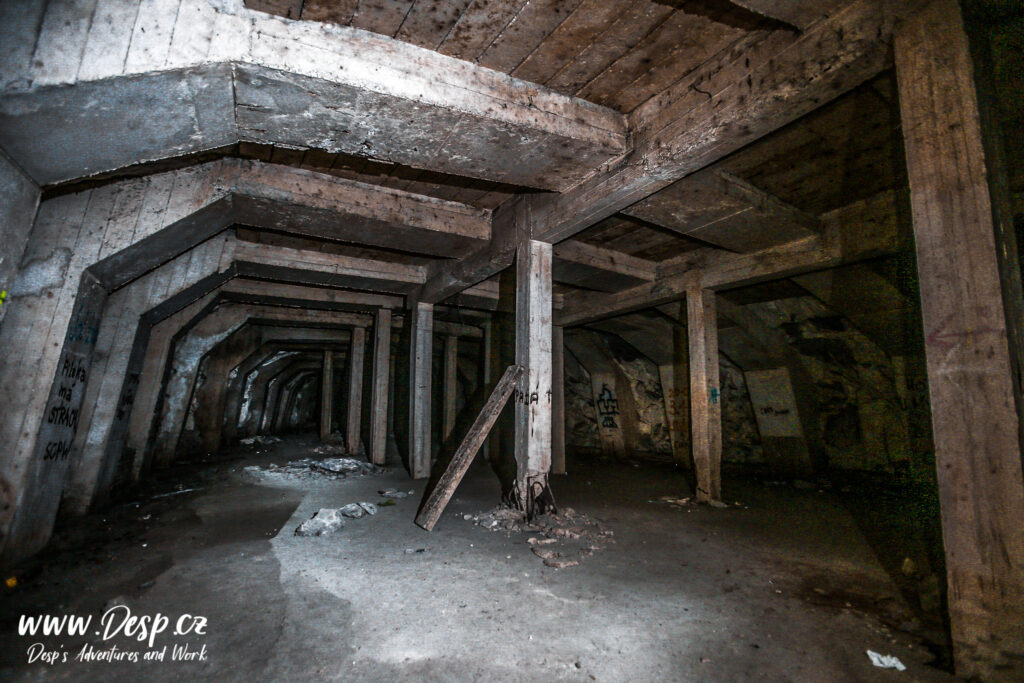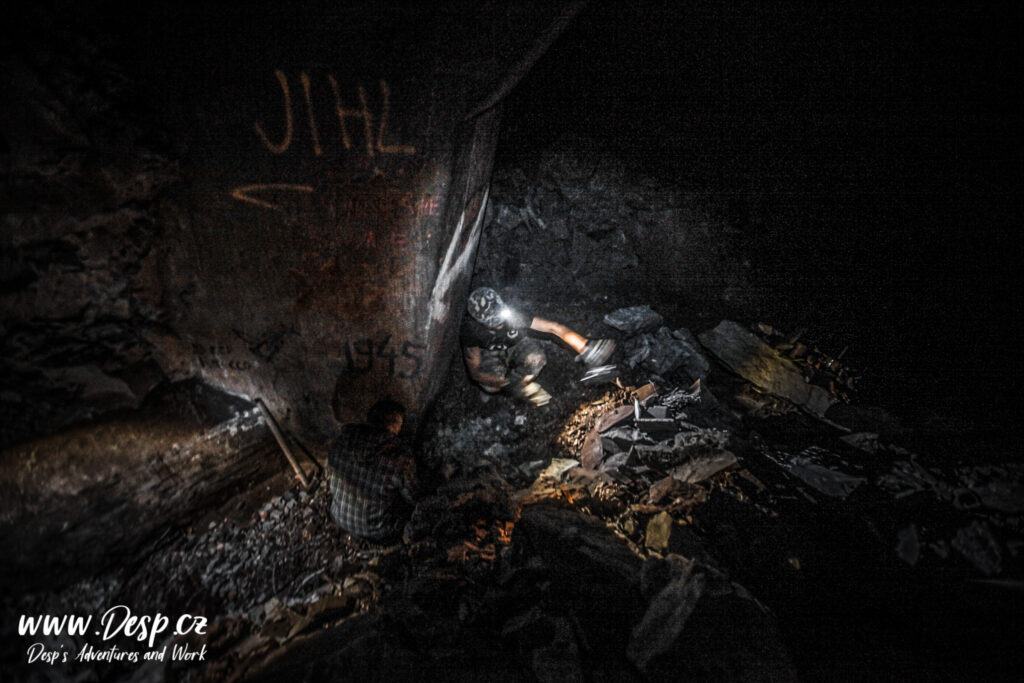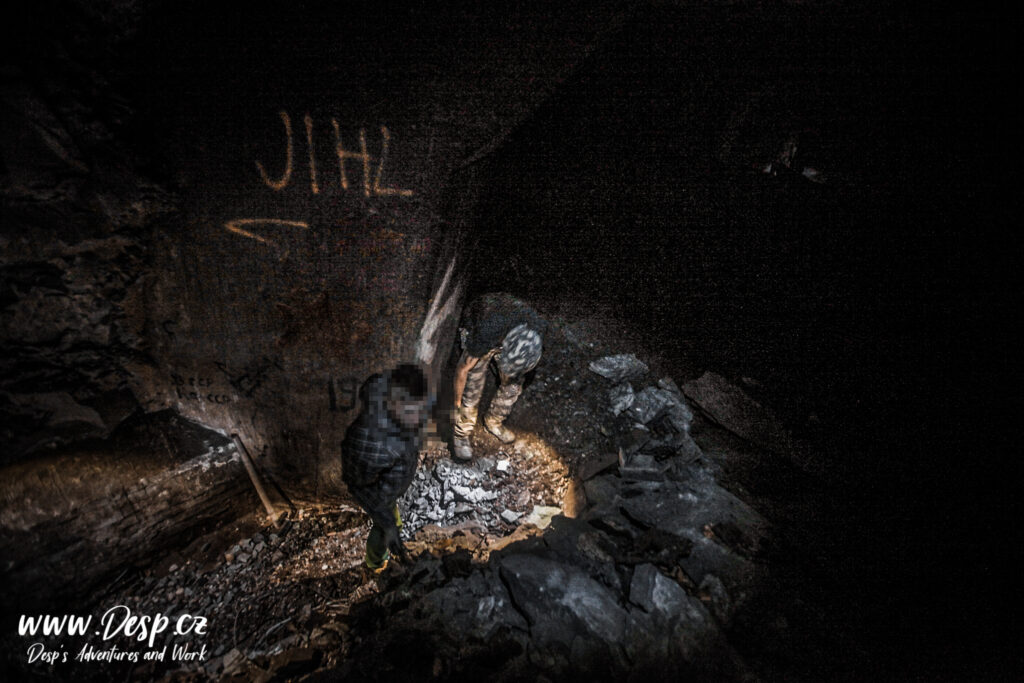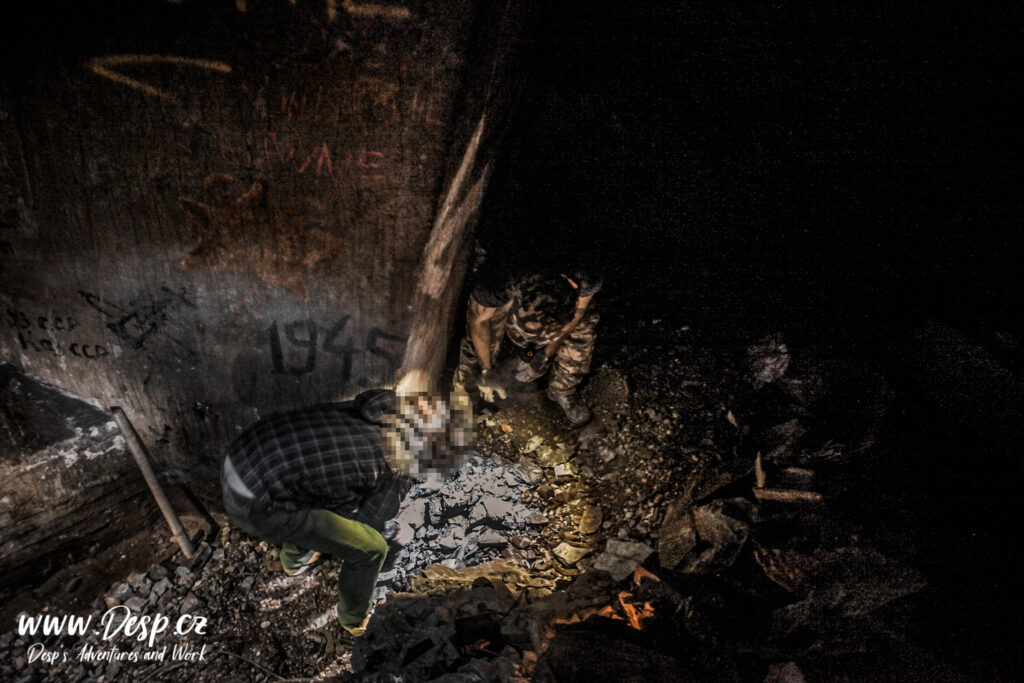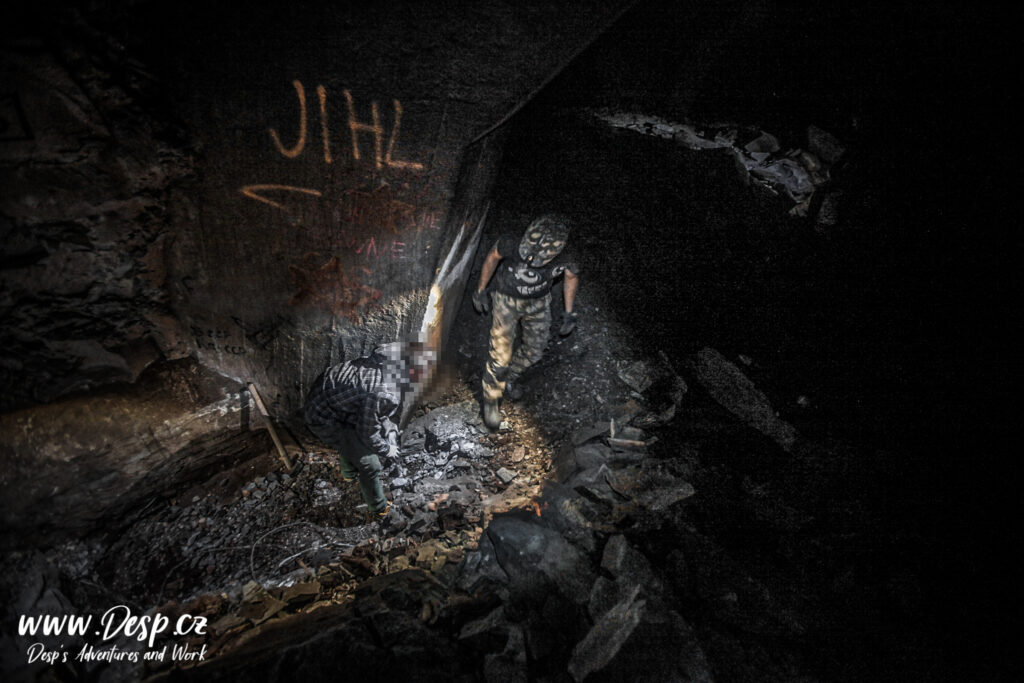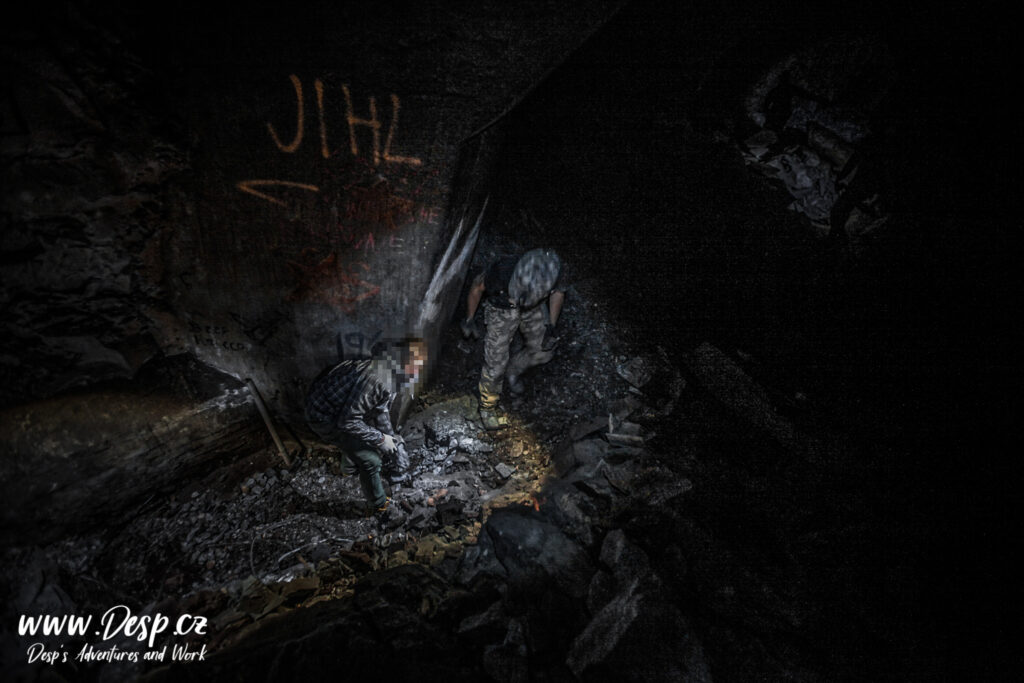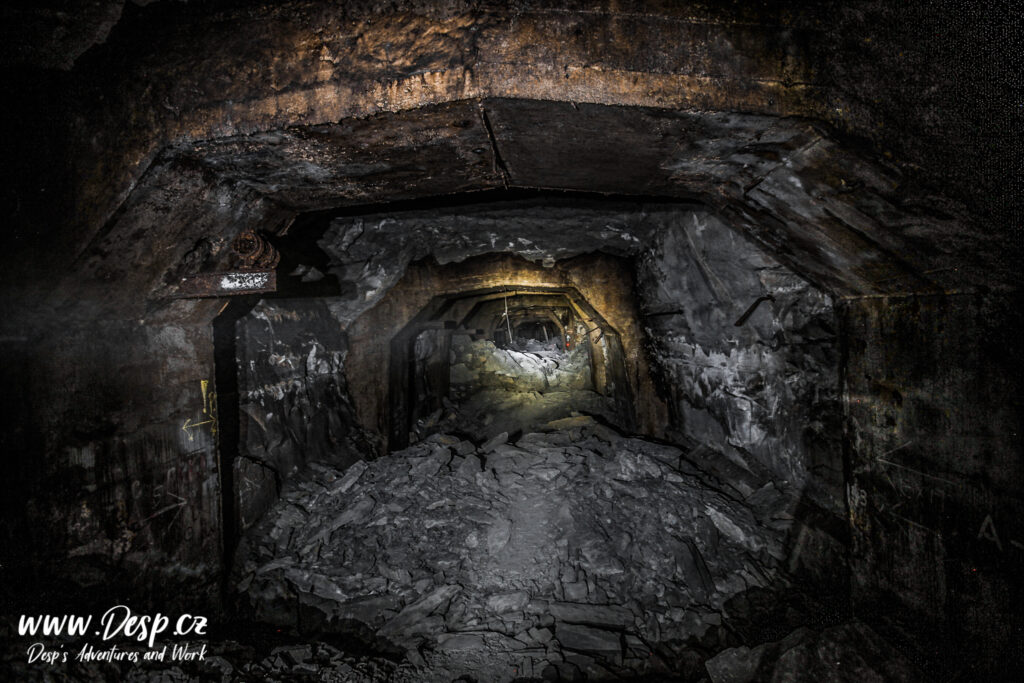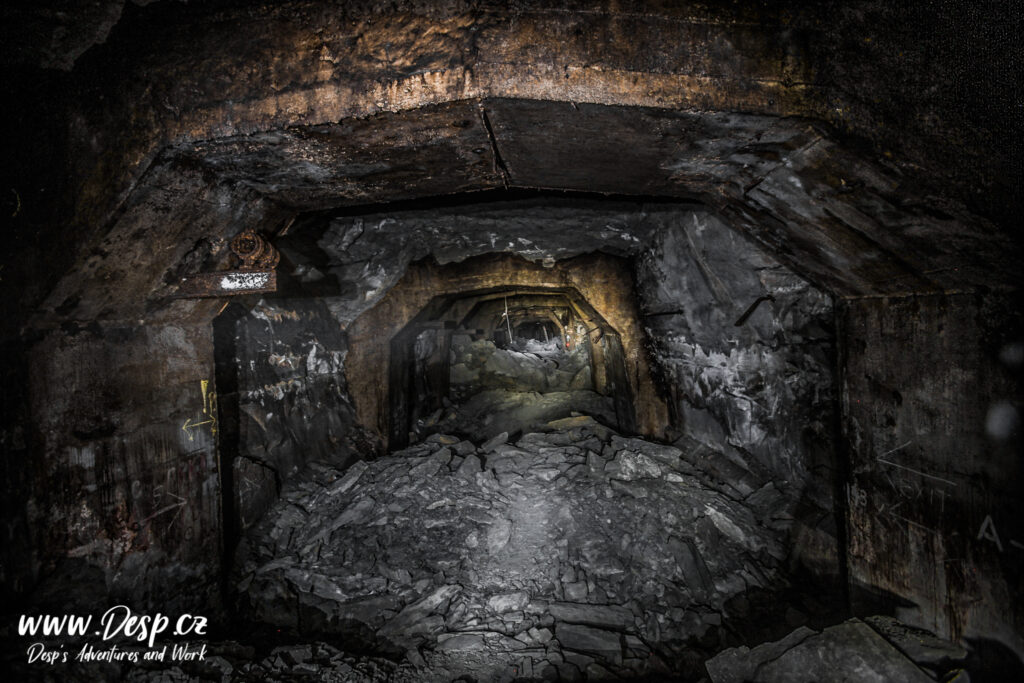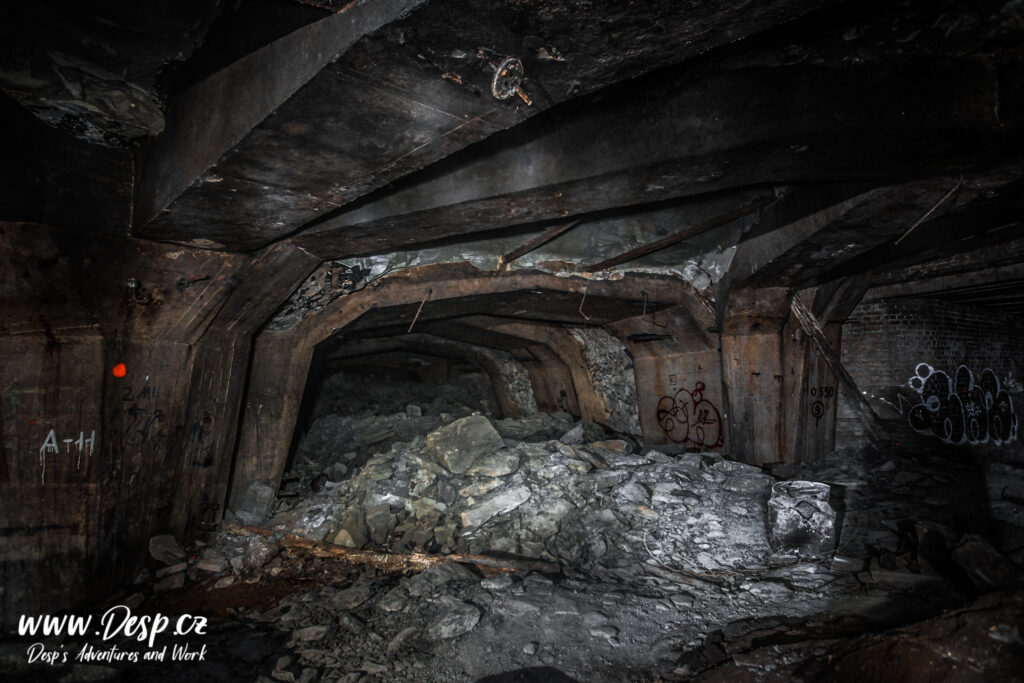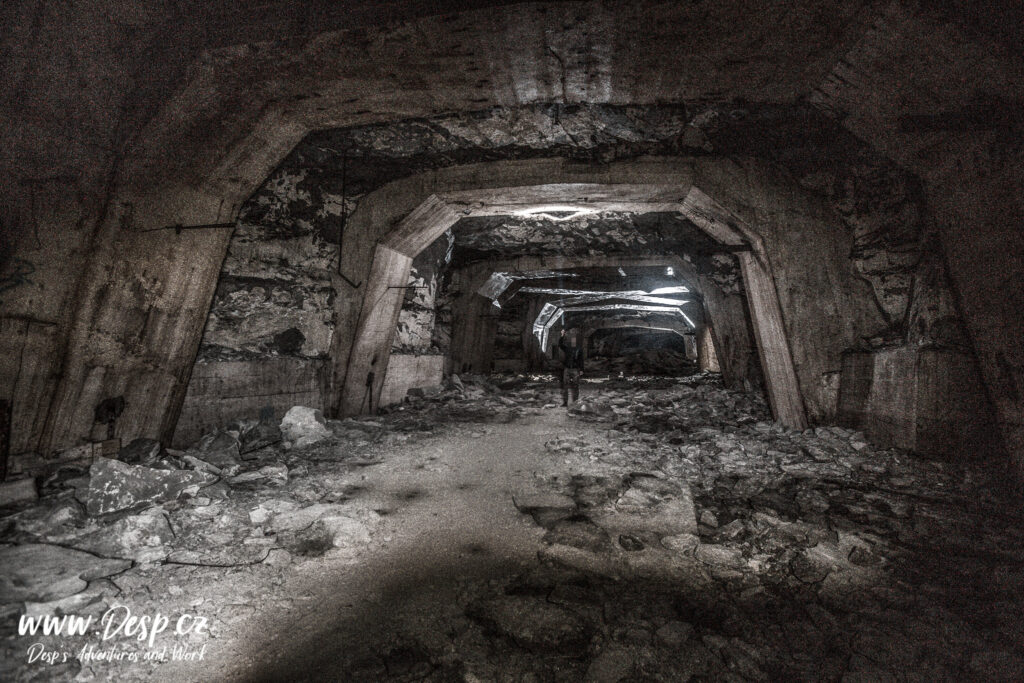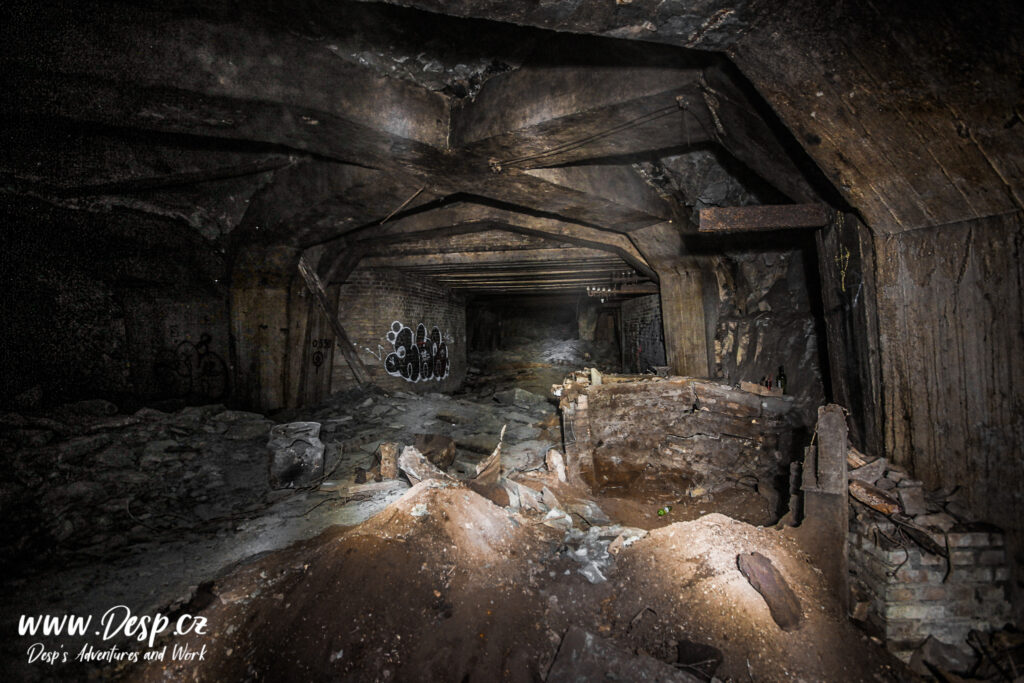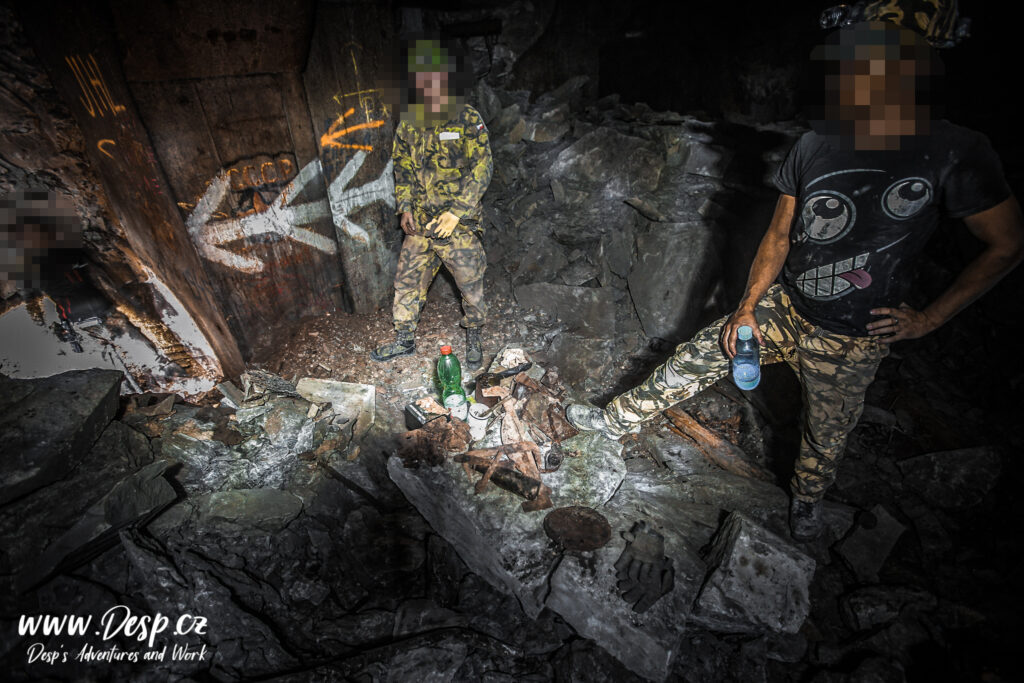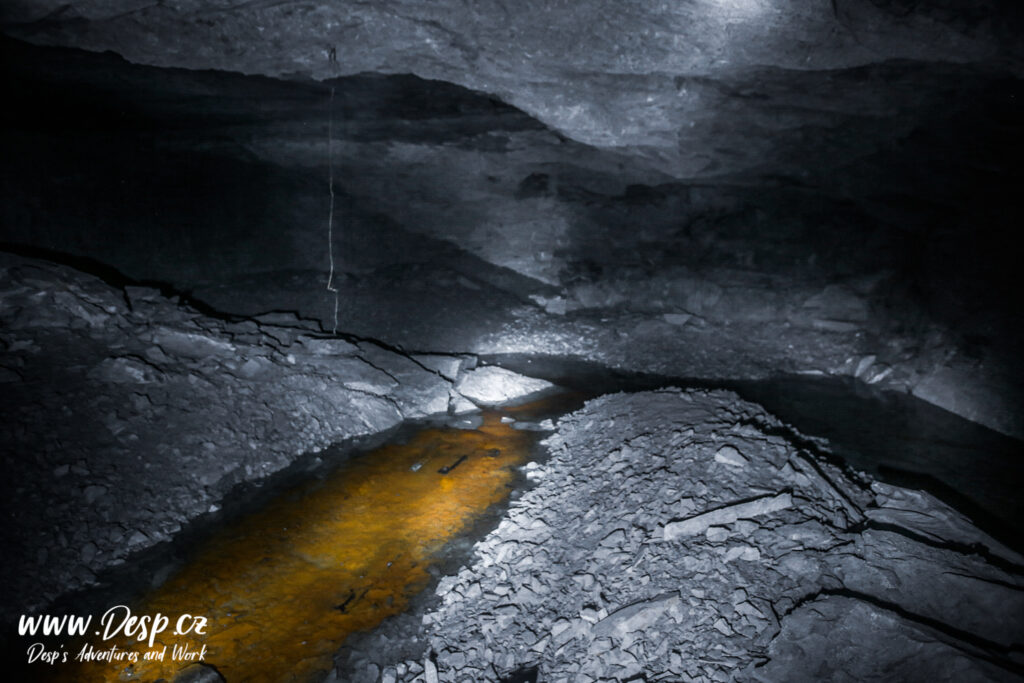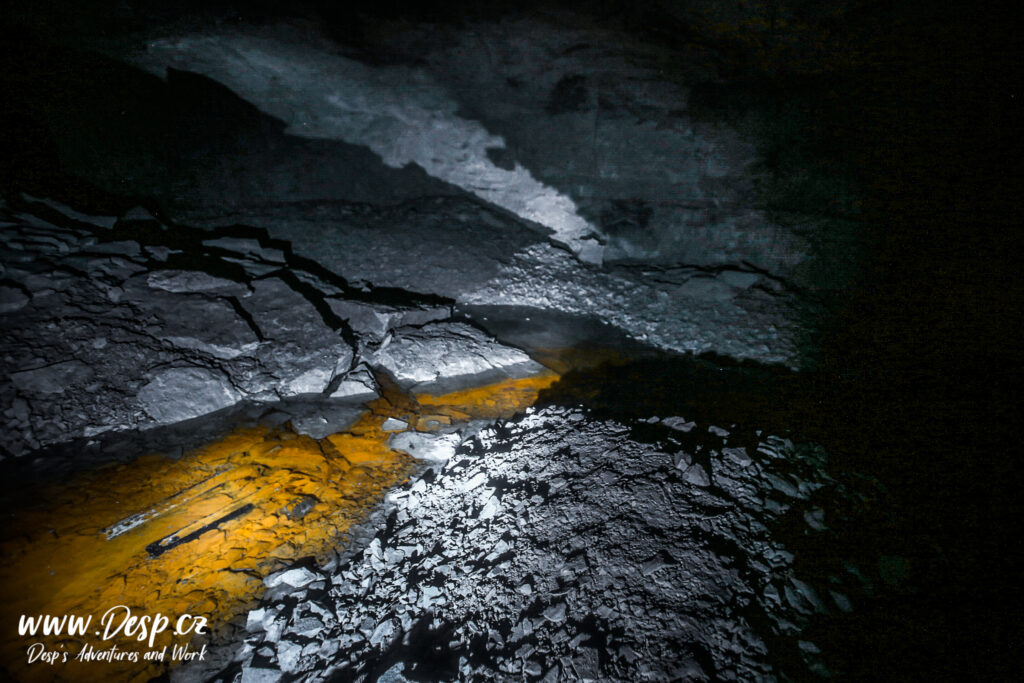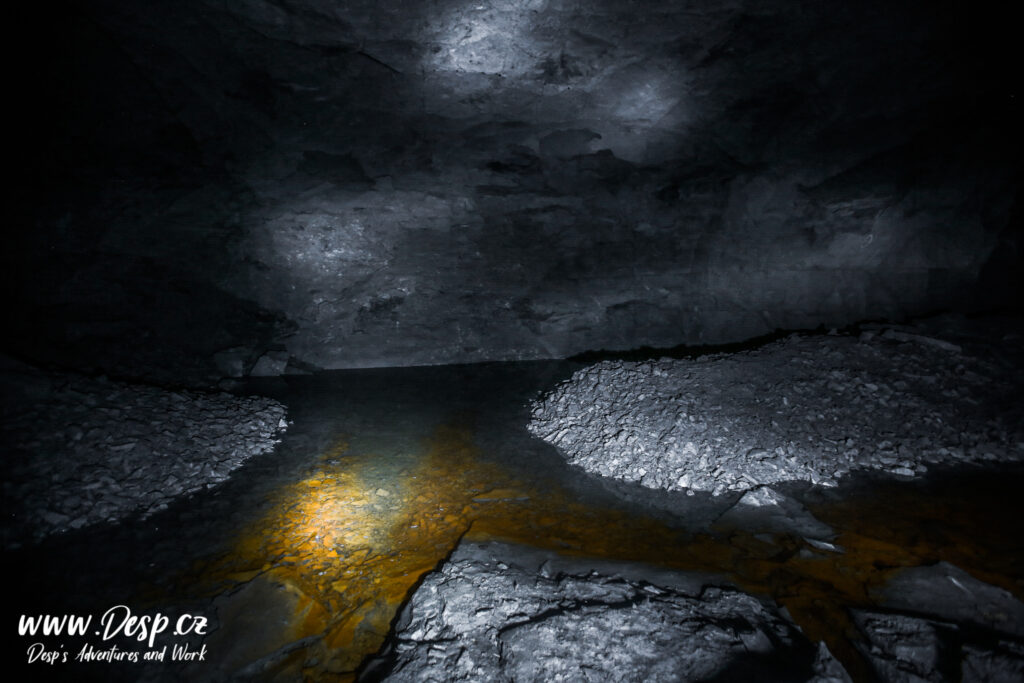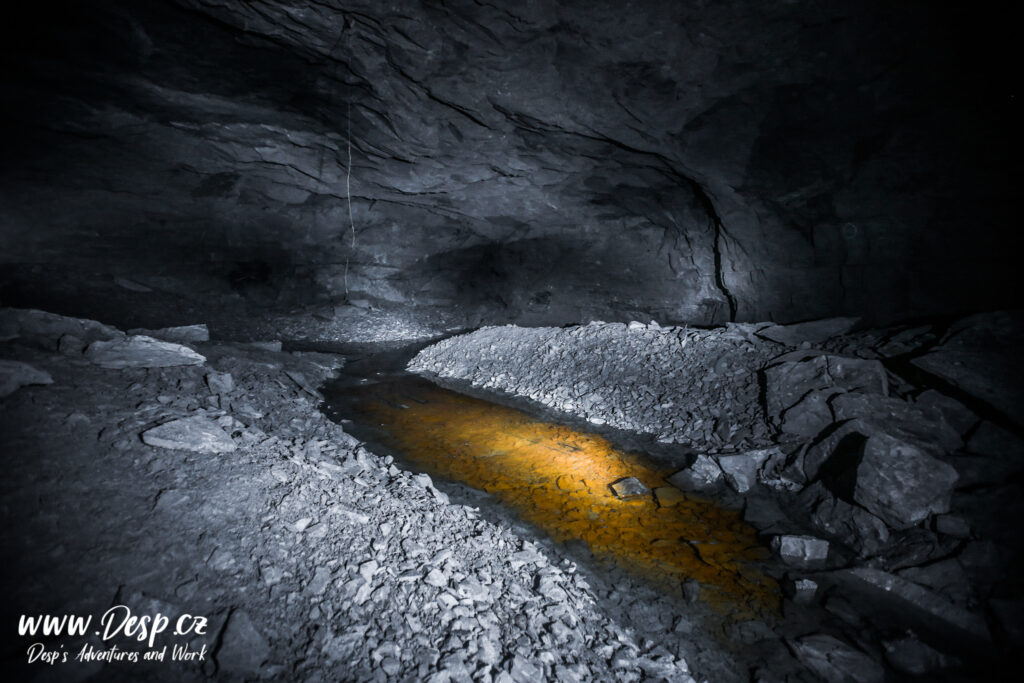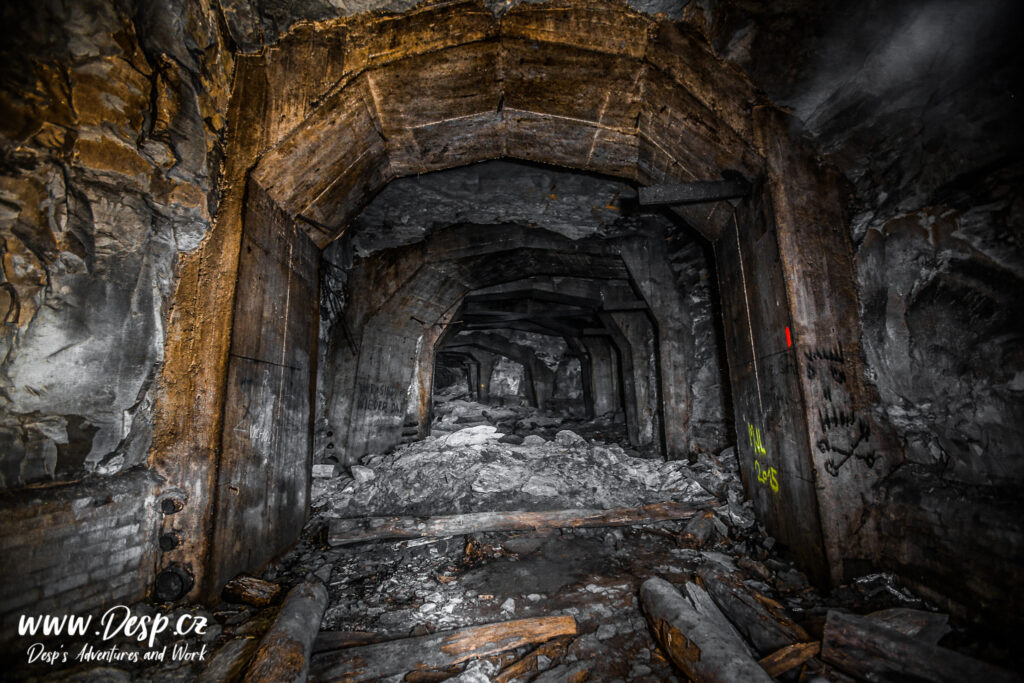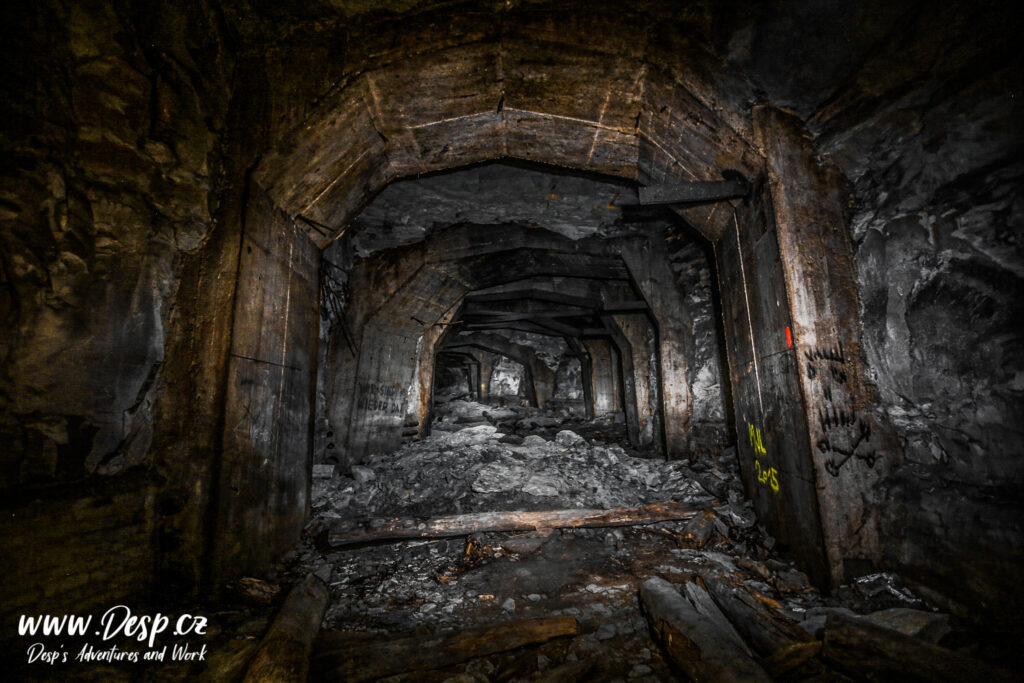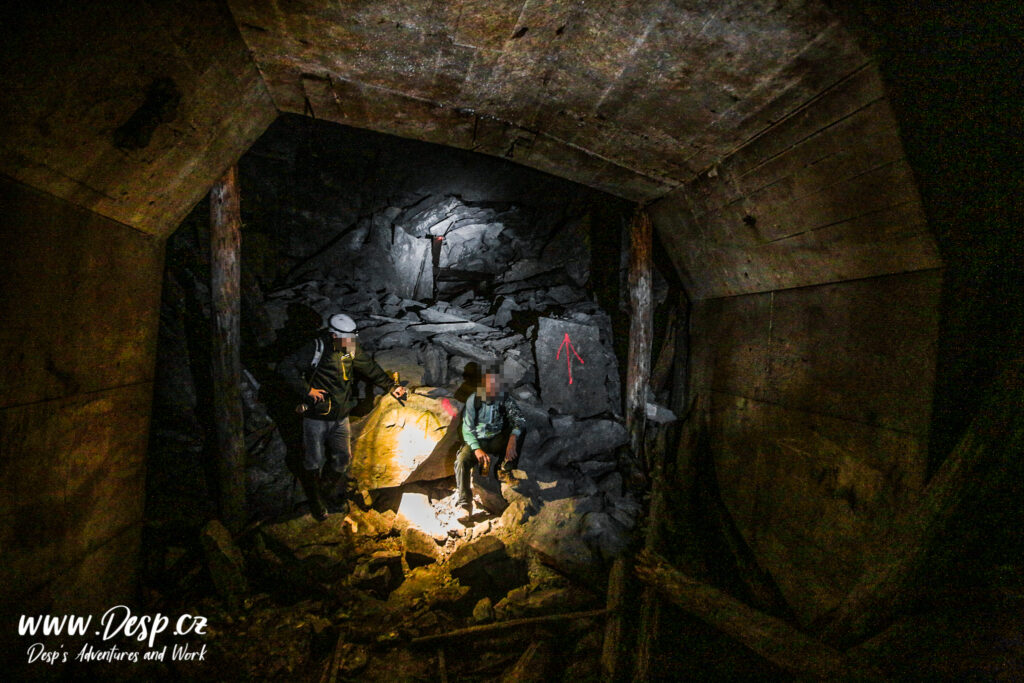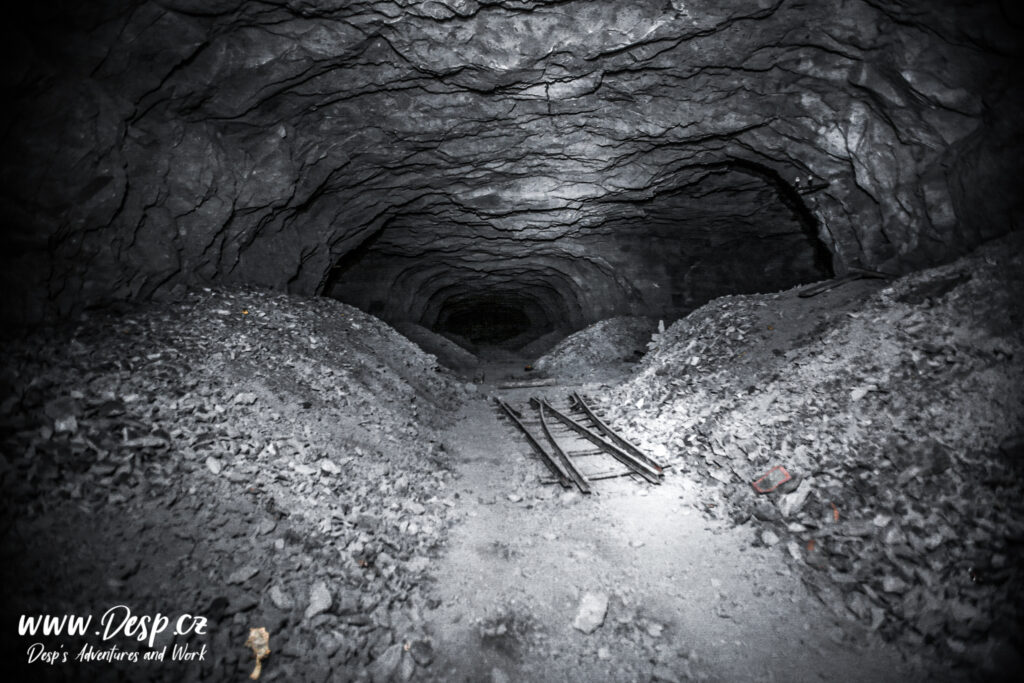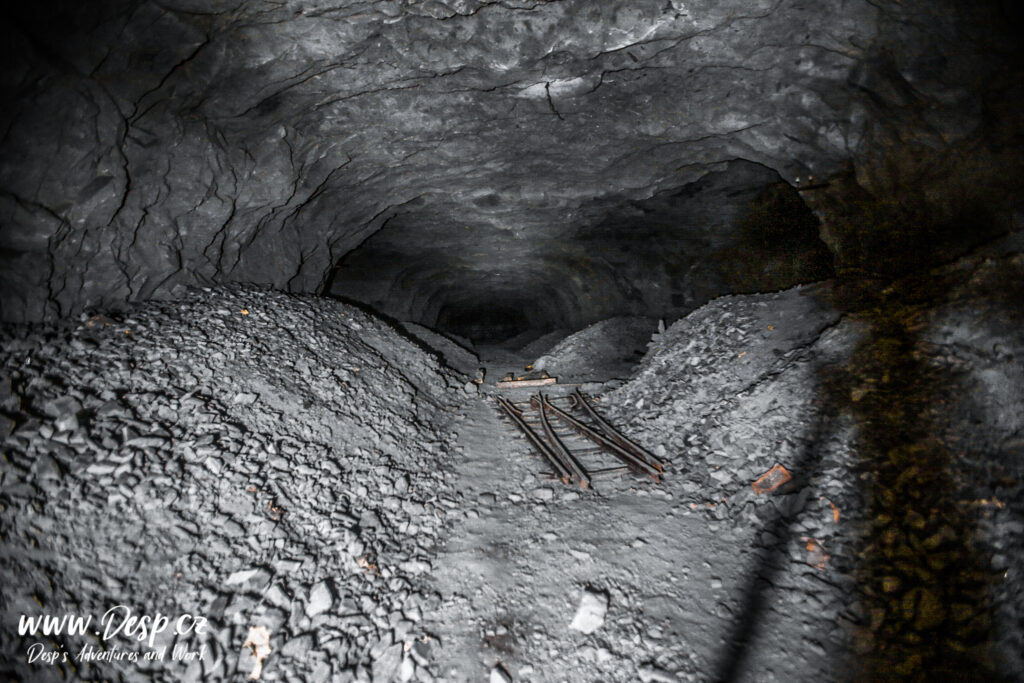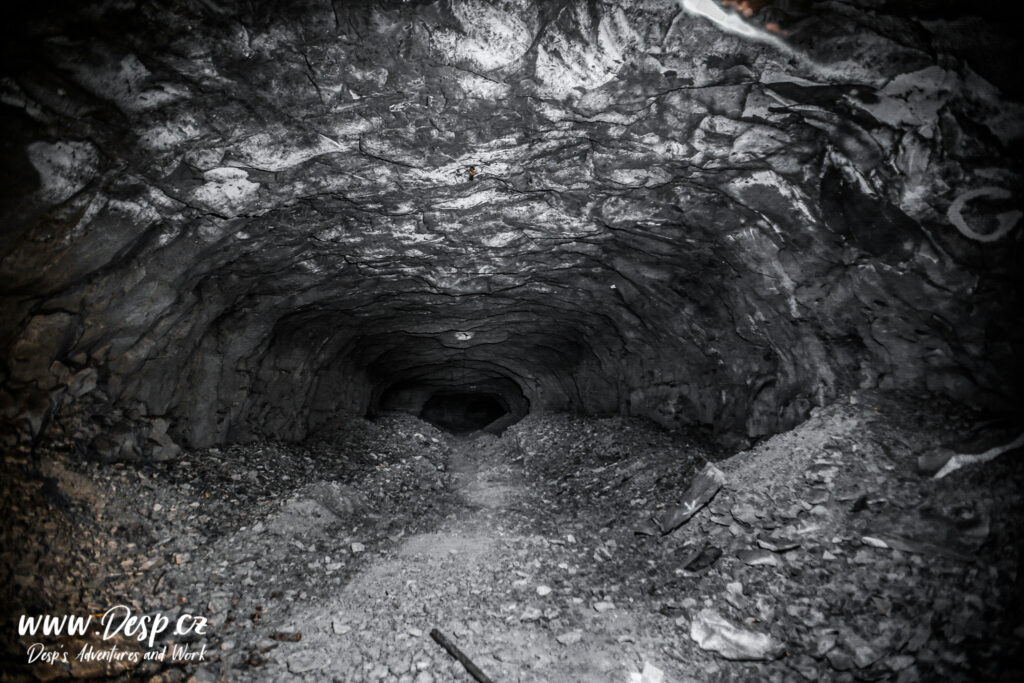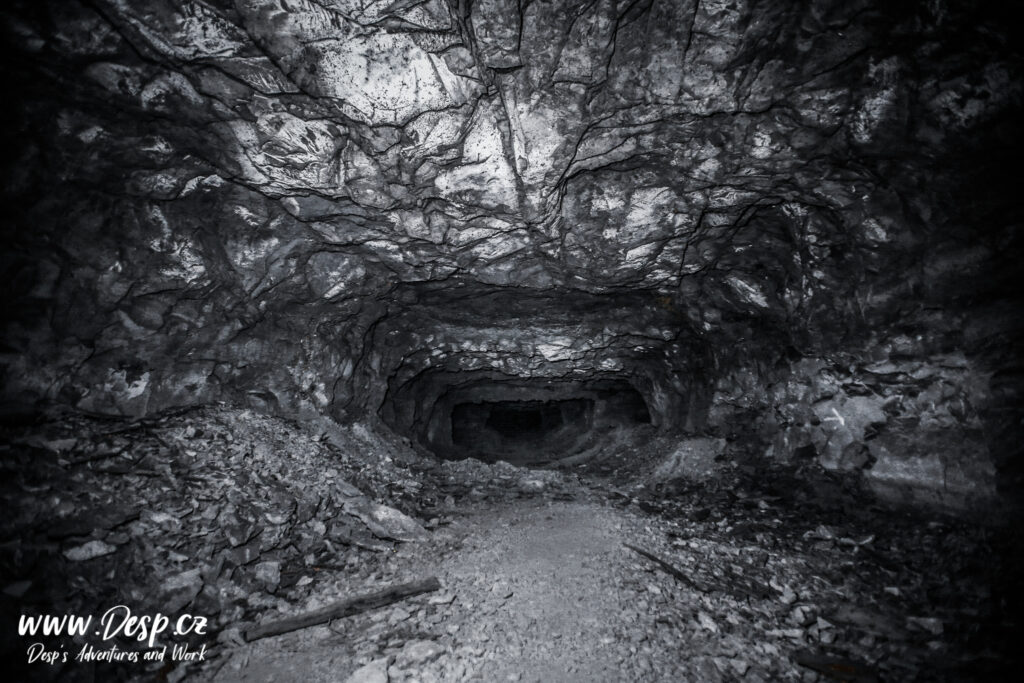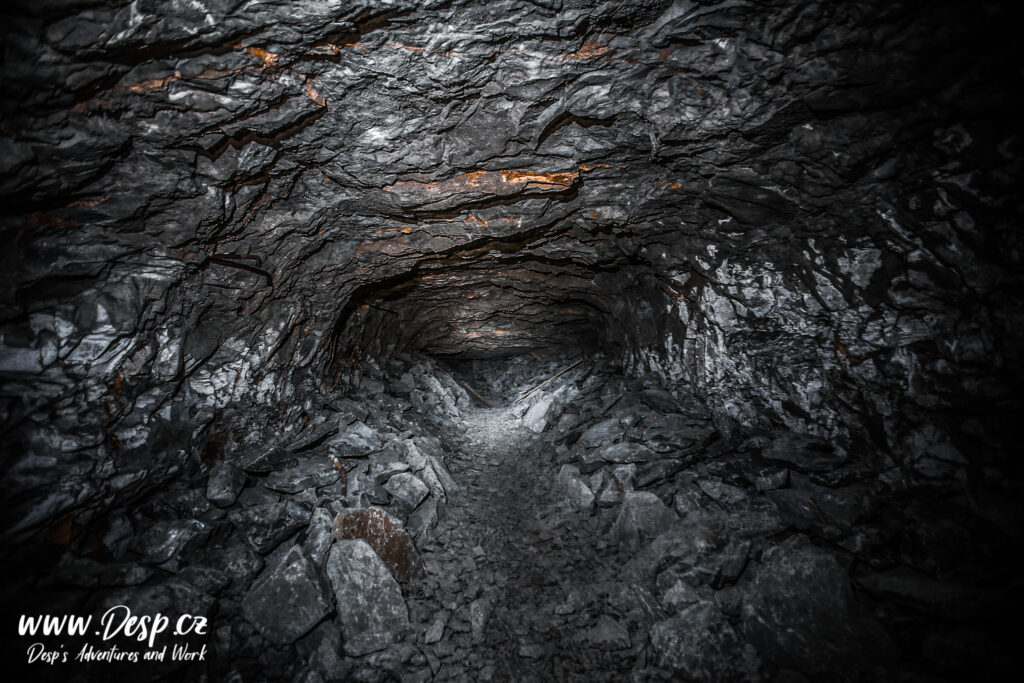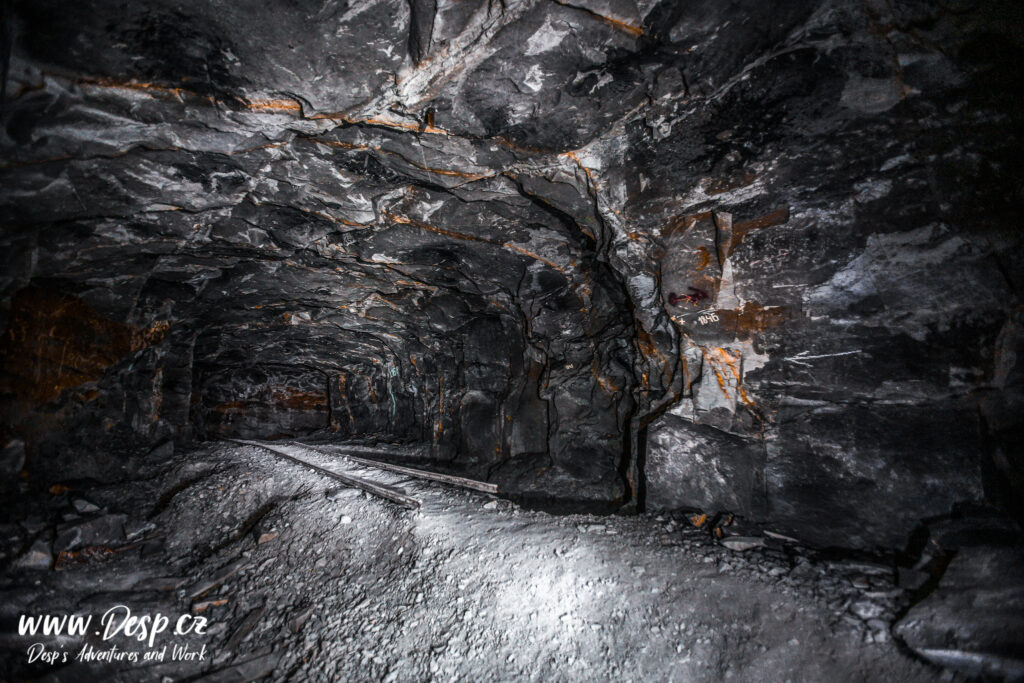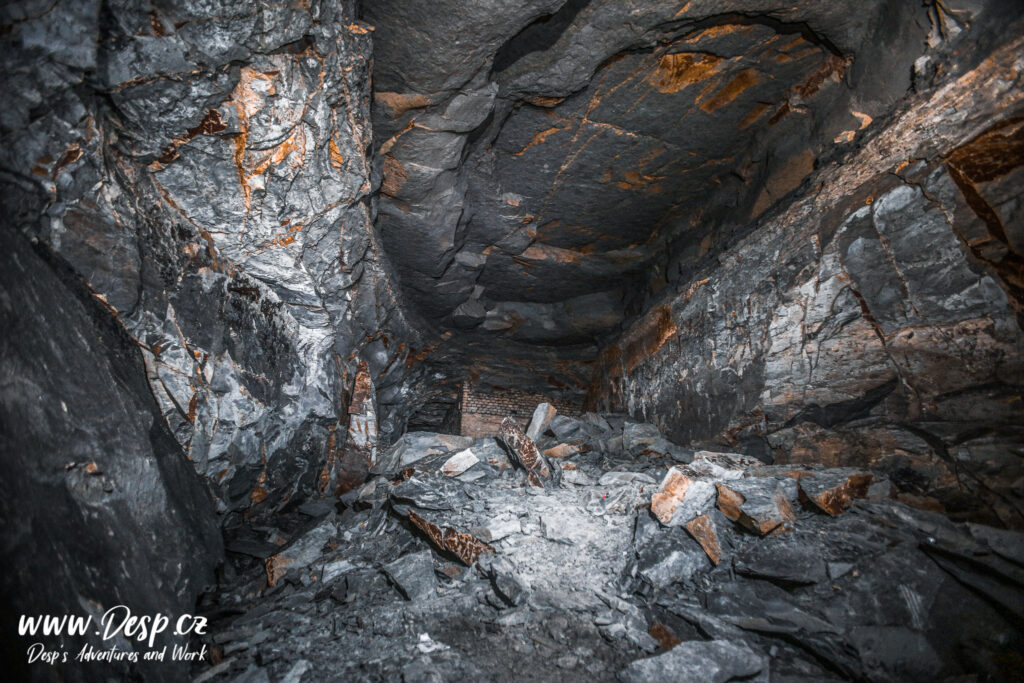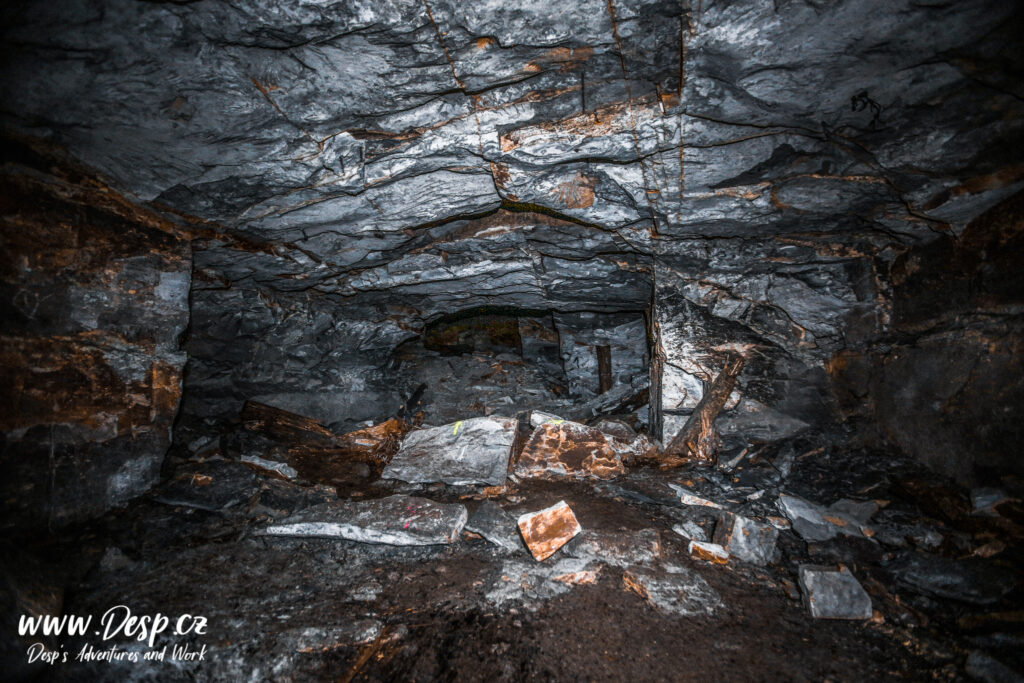Underground Factory Richard (U-Verlagerung Richard)
It is a fascinating and, at the same time, dark place with a rich history.
Originally established as a mining complex near Litoměřice, it gained a new purpose during the Second World War.
The Underground Factory Richard continues to intrigue…
Origin of Underground Factory Richard
The Underground Factory Richard was built in 1944 at the behest of the Nazi regime, which required facilities for its war production. Originally, it was an area with limestone deposits, mined here since the late 19th century. With increasing demands for weapon production and the need to shield production from Allied bombings, the Nazis began planning the construction of underground factories hidden from bombardment. Richard was to be one of these “secret armament factories” underground, where crucial production for the German army would take place. Due to its proximity to the quarry and natural conditions, the site beneath Litoměřice was chosen as ideal.
Construction and adaptation of the underground spaces into a factory began in 1944, led by German engineers. The work was anything but easy. Conditions underground were harsh, and workers, mostly war prisoners and forced laborers, had to work in very low temperatures, with inadequate lighting, and in a hazardous environment. Three main sections of the complex, known as Richard I, Richard II, and Richard III, were established during construction.
Production During World War II
Production at Richard began in late 1944, focusing on essential parts for the German war industry. Most notably, parts for engines and tanks were produced, which were necessary for German military operations. The German arms company Auto Union manufactured parts for Panther tank engines and other military equipment here. Some sections of Underground Factory Richard have yet to be fully uncovered, sparking speculation about other, lesser-known activities that might have taken place there, including possible development of weapons with secret technologies.
Prisoners, mainly from a sub-camp in Litoměřice that was part of the Flossenbürg concentration camp, were deployed to the Richard factory. Prisoners of various nationalities were detained here, primarily Jews, Poles, Russians, French, and Germans. The total number of prisoners who worked in the factory exceeded 18,000. These prisoners worked in extremely demanding conditions, suffering from a lack of food, exposure to violence, forced to work in the cold and damp, and risking their lives daily in physically and mentally exhausting labor. Due to insufficient medical care and poor hygiene, many prisoners died from disease and exhaustion.
It is estimated that approximately 4,500 prisoners lost their lives during the existence of Richard. However, this number may vary as exact records have not survived. Prisoners came from all over Europe, and many did not survive the brutal camp conditions or the death march that occurred during the evacuation in 1945.
Post-War Usage and Mysteries of the Factory
After the war, the Richard II complex was primarily used for storing hazardous materials, including radioactive waste. Due to its secluded location and less accessibility than Richard I, Richard II provided better conditions for safely storing materials associated with post-war nuclear research and industry. This area allegedly also conducted limited chemical manufacturing and experimental activities under the aegis of state institutions, presumed to include testing new materials and some chemical substances.
The larger and more accessible Richard I was initially also considered for storing radioactive waste and other industrial activities because it would have been easier to ensure its logistical supply. However, according to official records, this plan was eventually abandoned, as the spaces would have required further modifications and protective measures to prevent waste from endangering the surroundings.
Very little information is known about Richard III, the smallest part of the entire complex. It seems to have remained unused after the war and, unlike other sections, was not utilized for storage, chemical, or other industrial production.
According to the findings of researcher Tomáš Rotbauer, who conducted long-term research on the Richard complex, including access to archival materials and witness testimonies, besides radioactive materials stored primarily in Richard II, chemical waste of various types may have indeed been stored in Richard I.
These findings add to our understanding of the post-war usage of the factory, where various sections were gradually adapted to the needs of the then-industry and research, often with minimal documentation, unclear records, and conflicting interests.
Interesting Facts About Richard Factory
One of the most intriguing and darkest chapters is that the Nazis allegedly tested various war technologies in their underground area, including weapons or materials intended to withstand Allied attacks. Speculation continues today about whether some projects involving chemical weapons or even research related to nuclear energy were conducted here.
The complex remains a subject of interest for historians, researchers, and tourists, as well as an attraction for mystery and enigma enthusiasts.
The photographs were taken between 2011 and 2016. They were captured with various, often old and inadequate, photographic equipment, frequently in low light. They are here solely for informational purposes.
Thank you for your understanding.
You can also view another part of the article.
In the next part of the article, there are much higher-quality photographs, taken with quality equipment shortly before the site was sealed.

Photographs may be shared, but any further use without the author’s consent is prohibited and constitutes a criminal offense.


